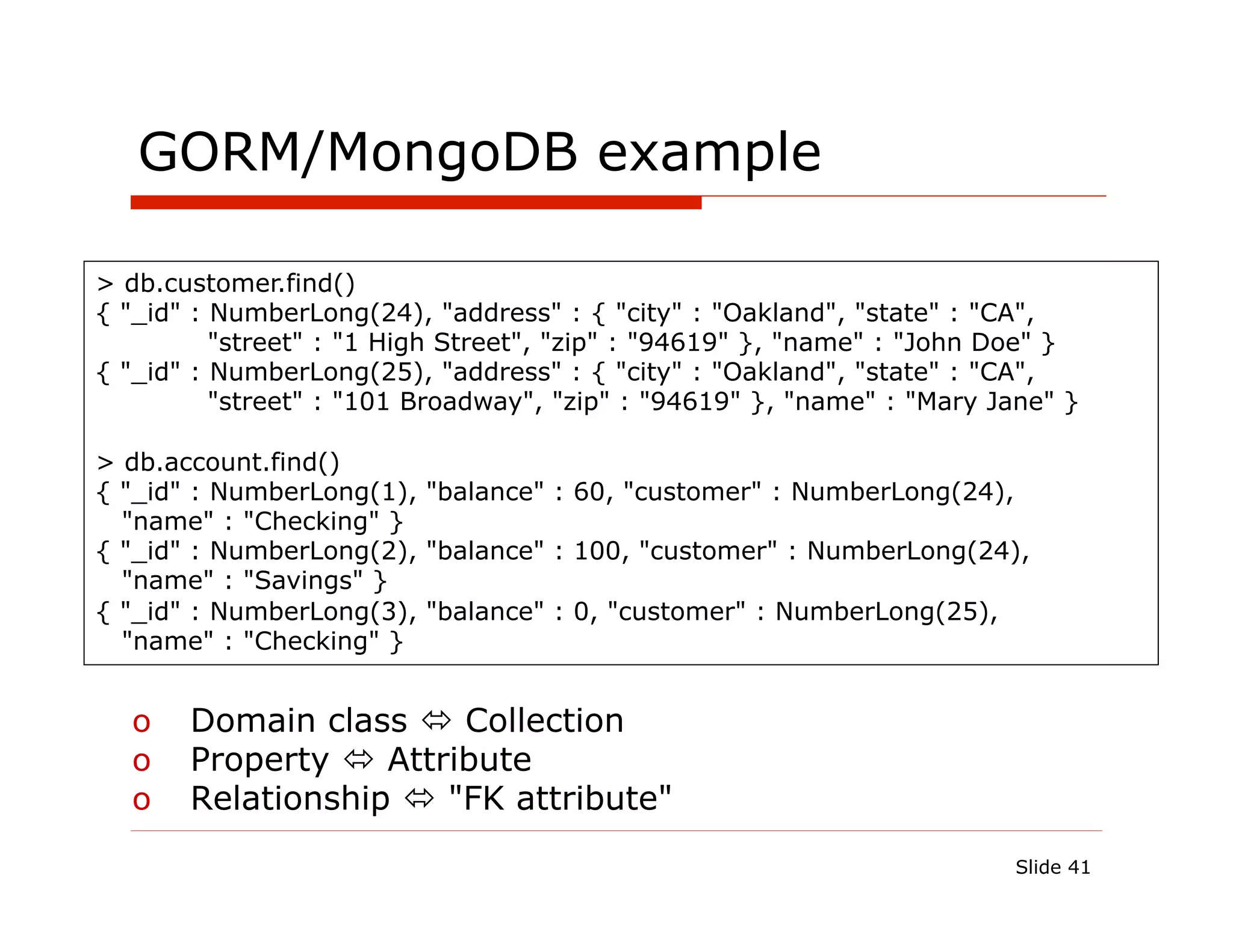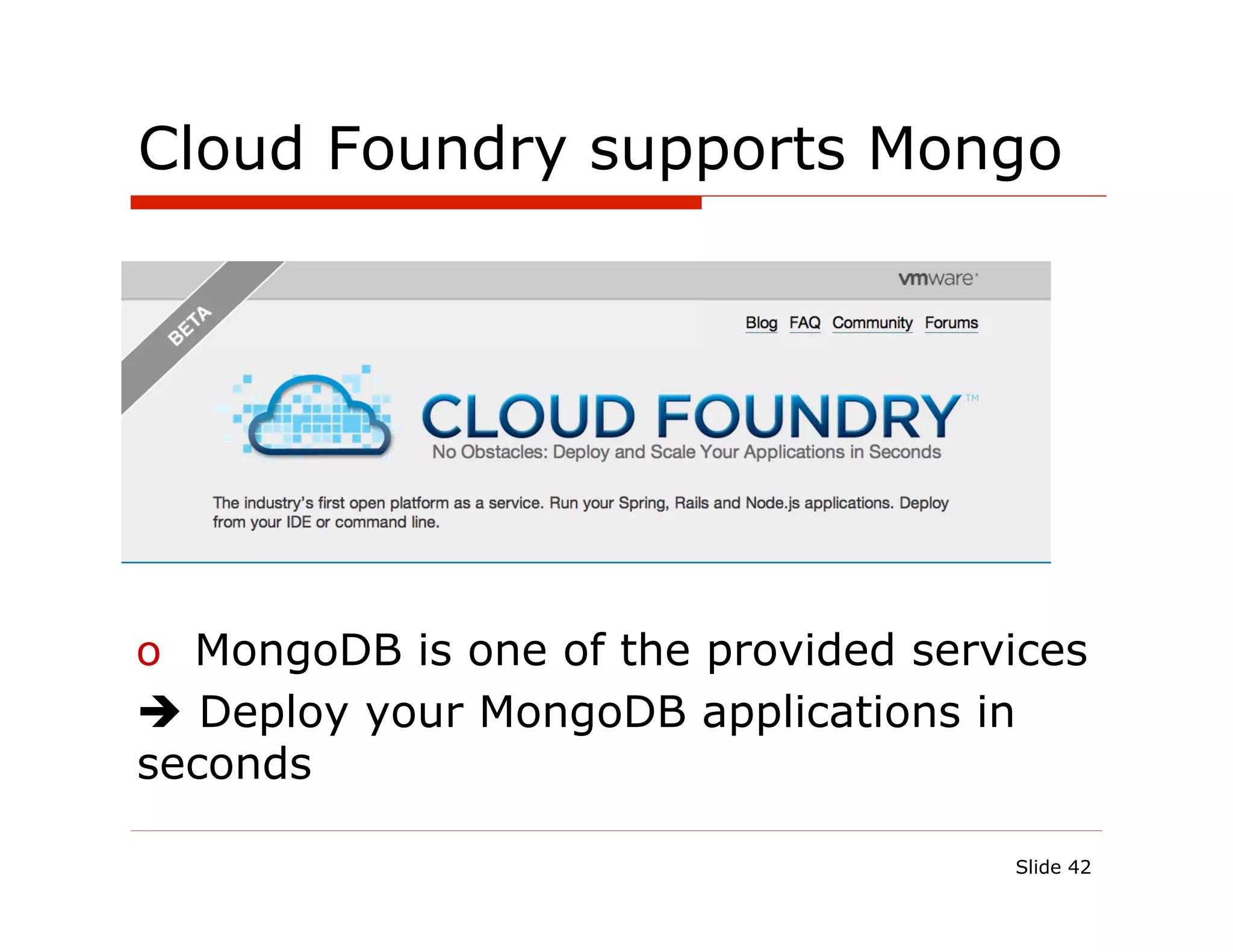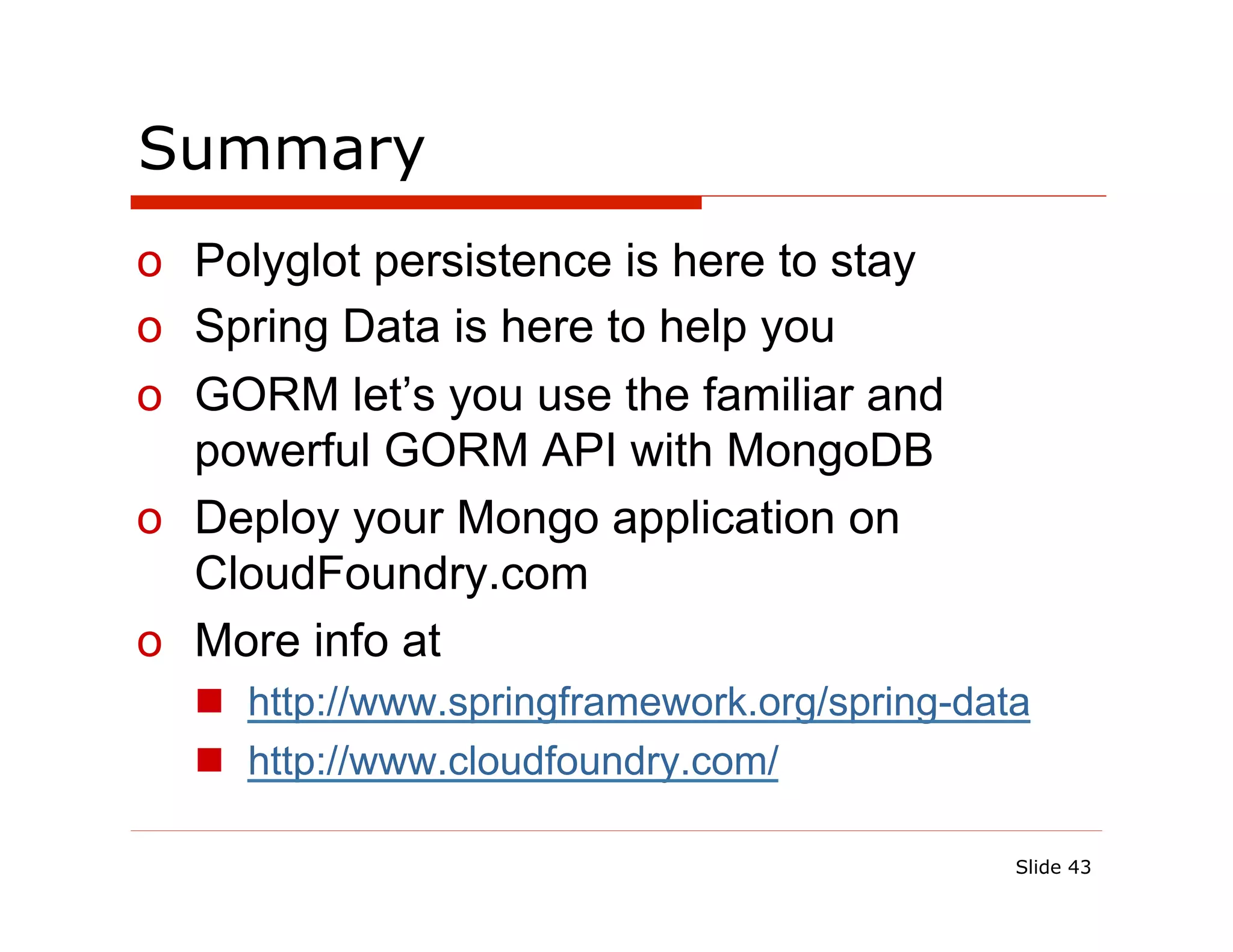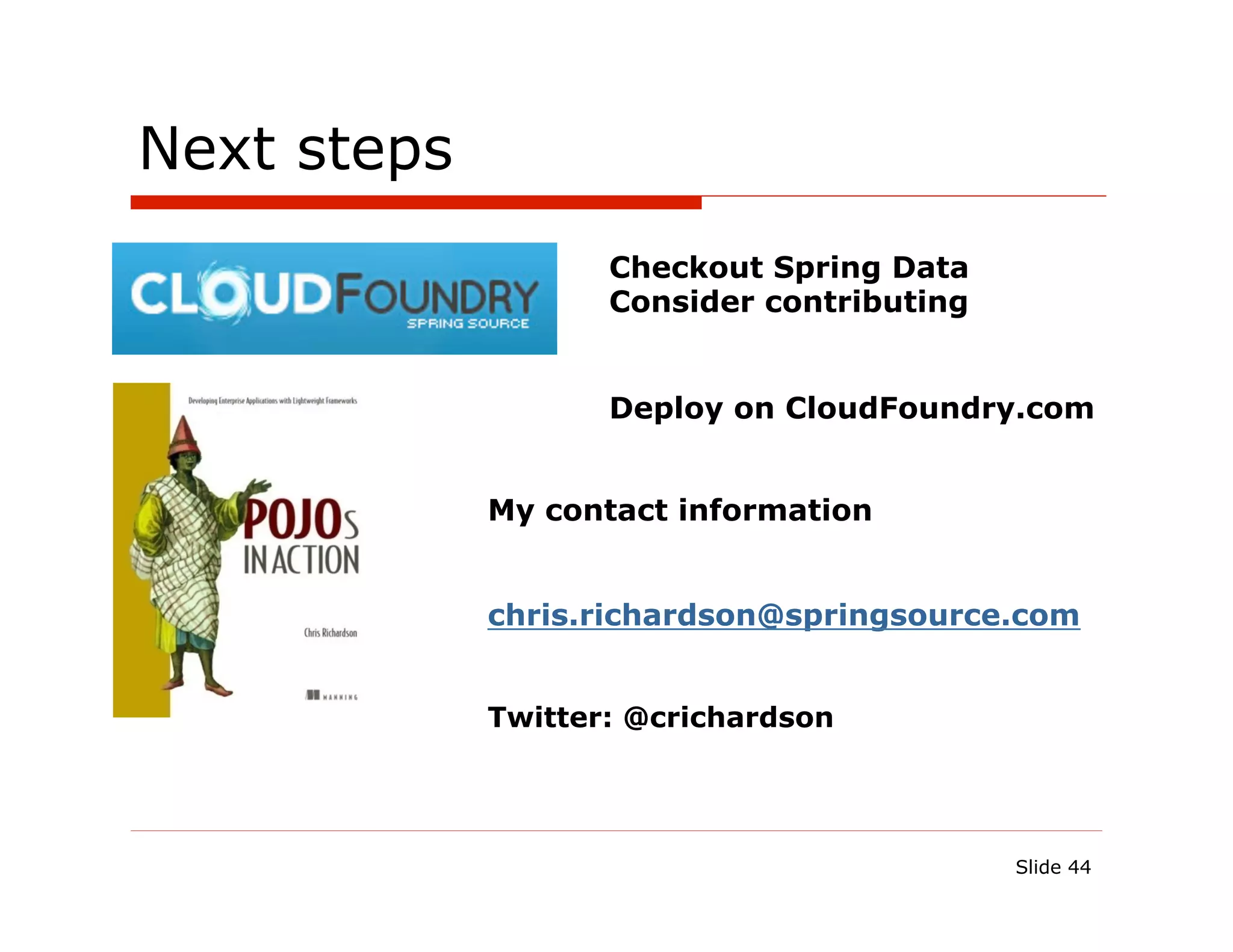This document provides an overview of how SpringSource is making it easier for Java and Grails developers to build MongoDB applications. It begins with an introduction to the presenter and agenda. It then provides background on the Spring framework and how Spring Data and MongoDB simplify data access and integration. The document introduces Grails and demonstrates how to use Grails with MongoDB, including examples of domain classes, repositories, and relationships. It concludes by discussing future ideas for tighter integration between Spring and MongoDB.
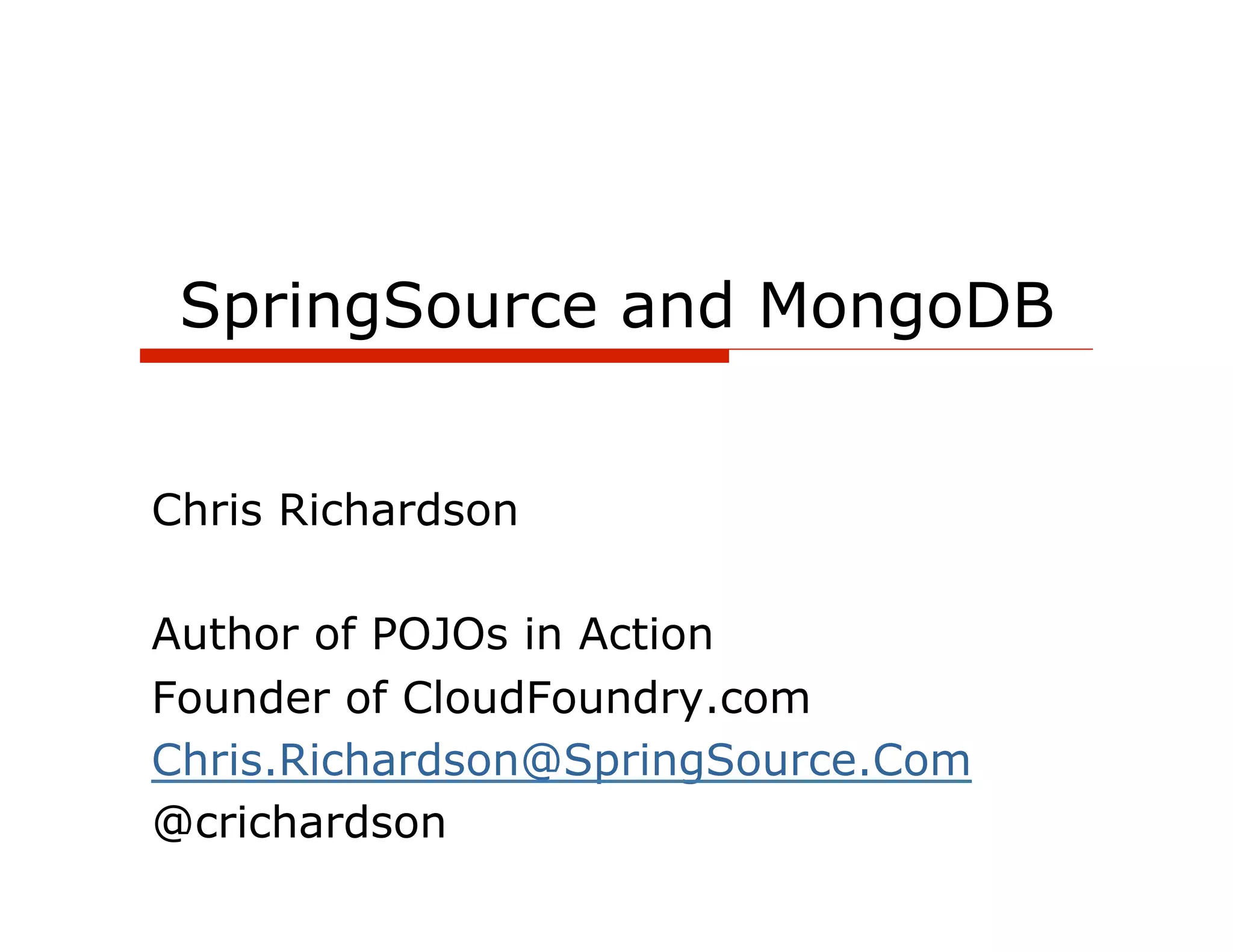
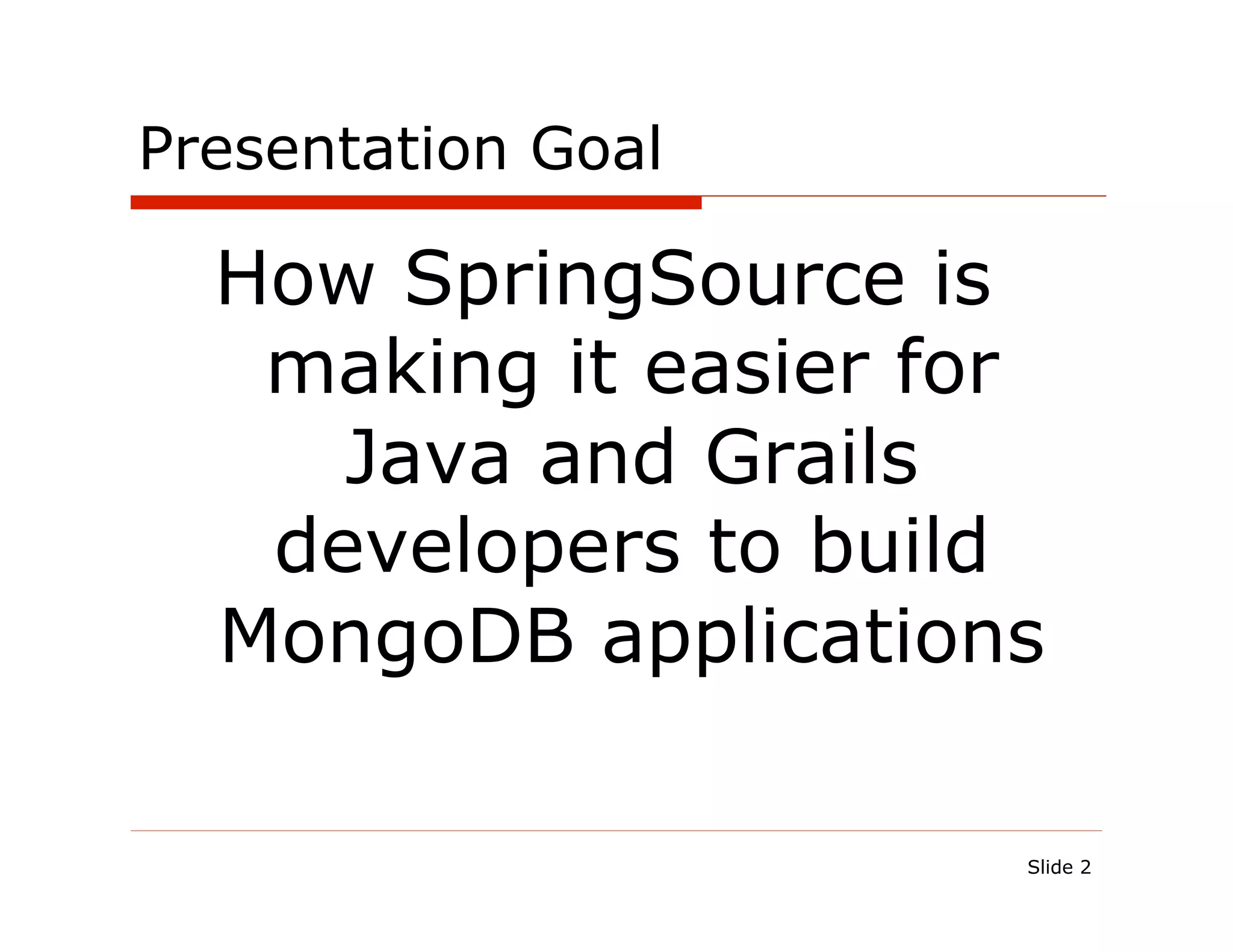
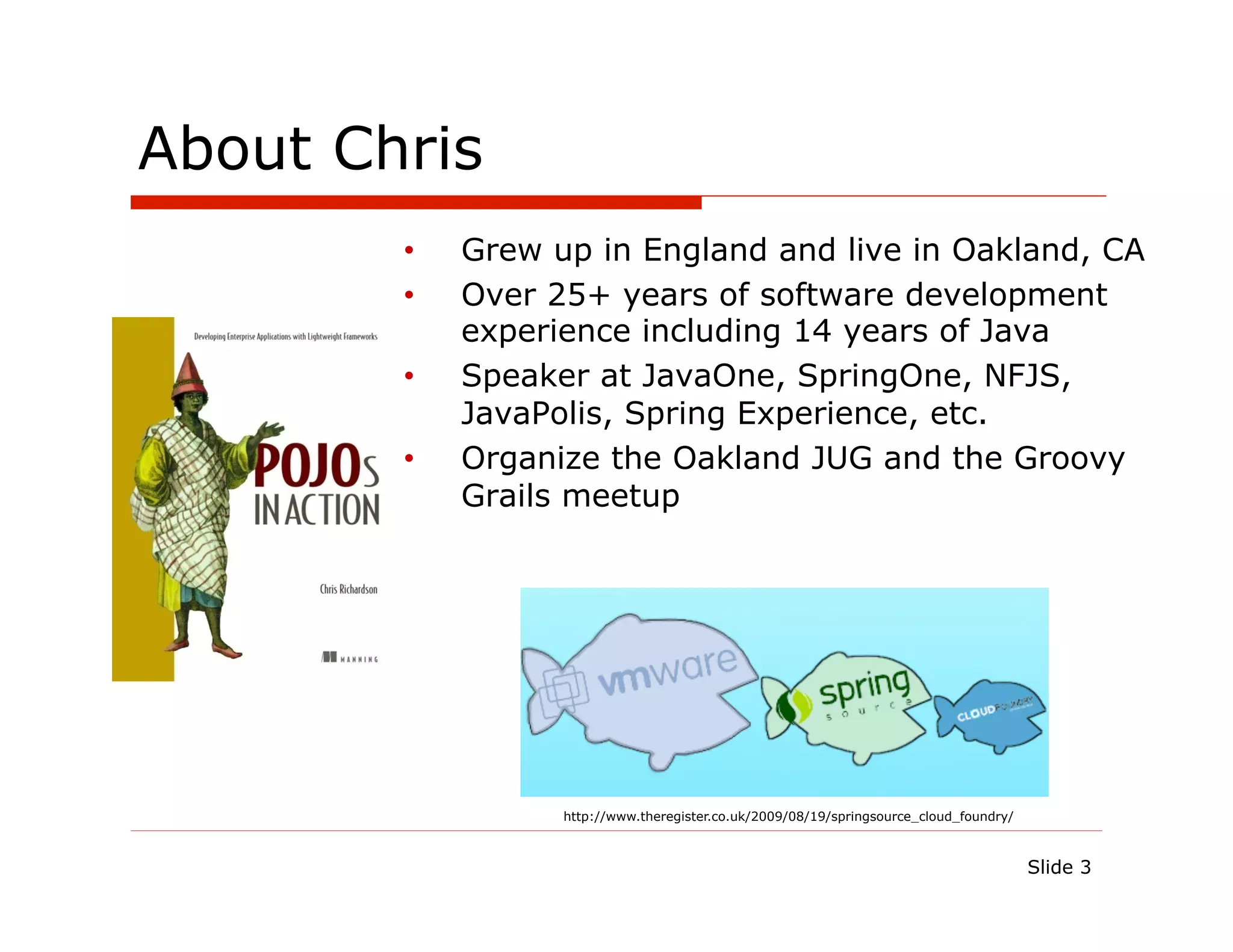
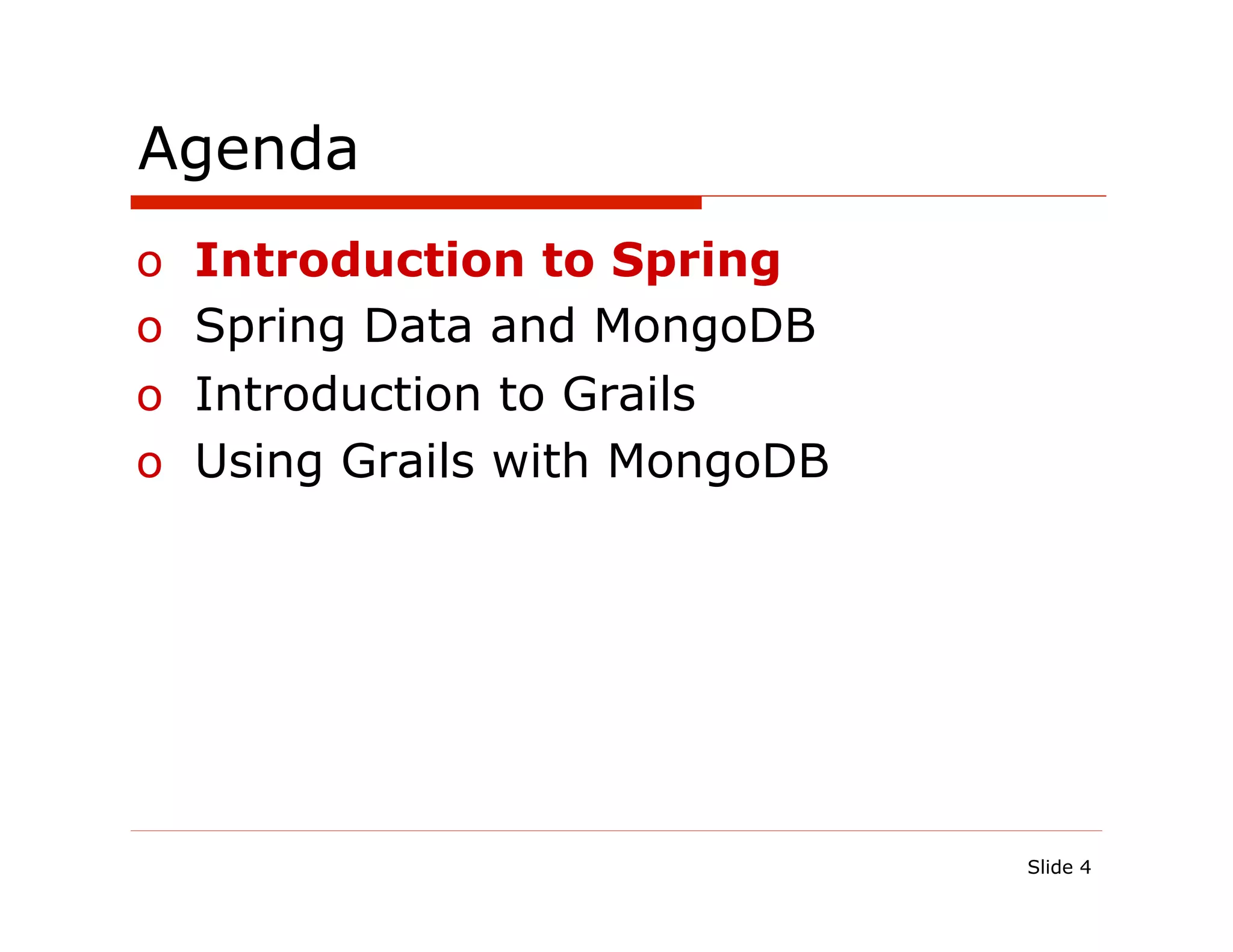
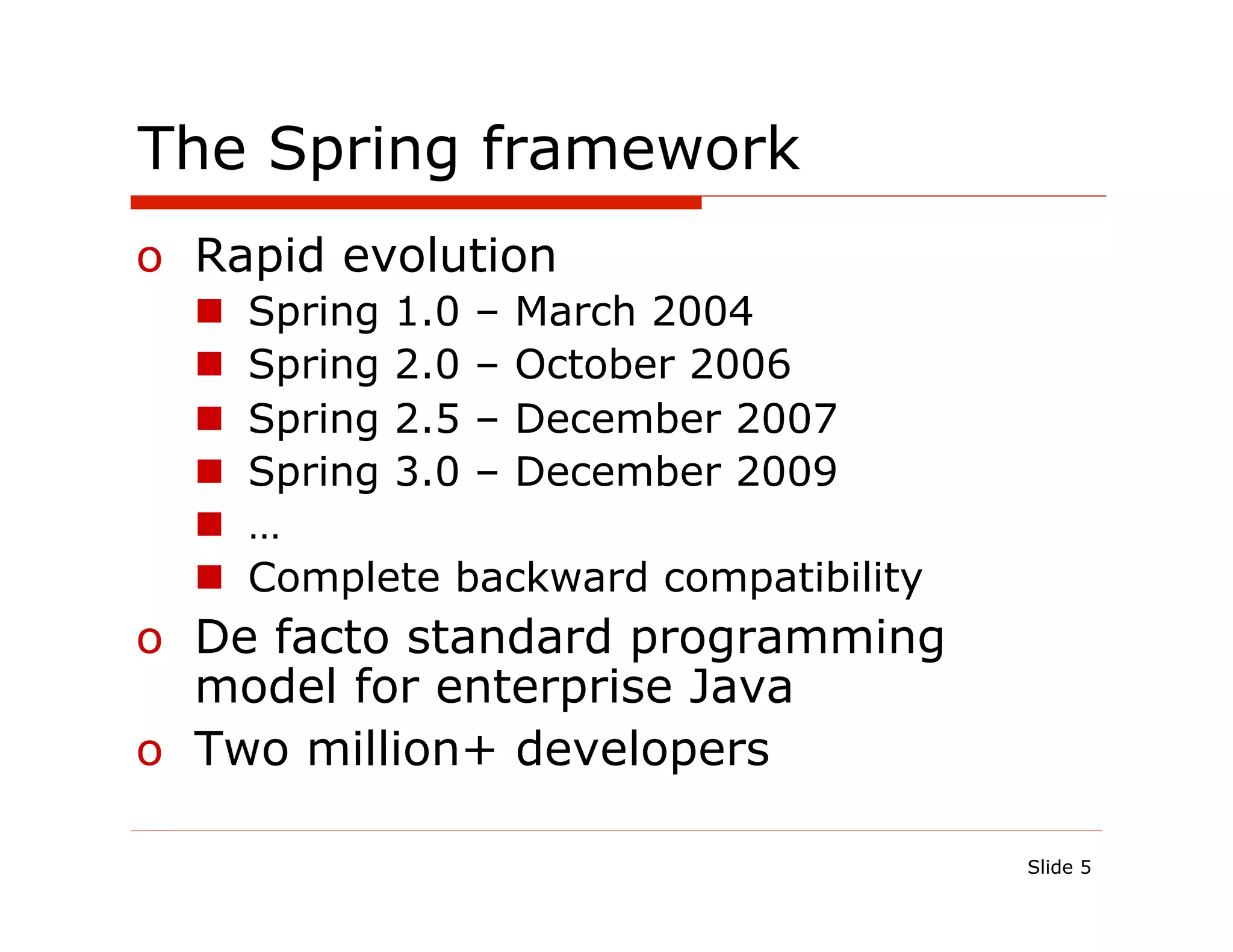
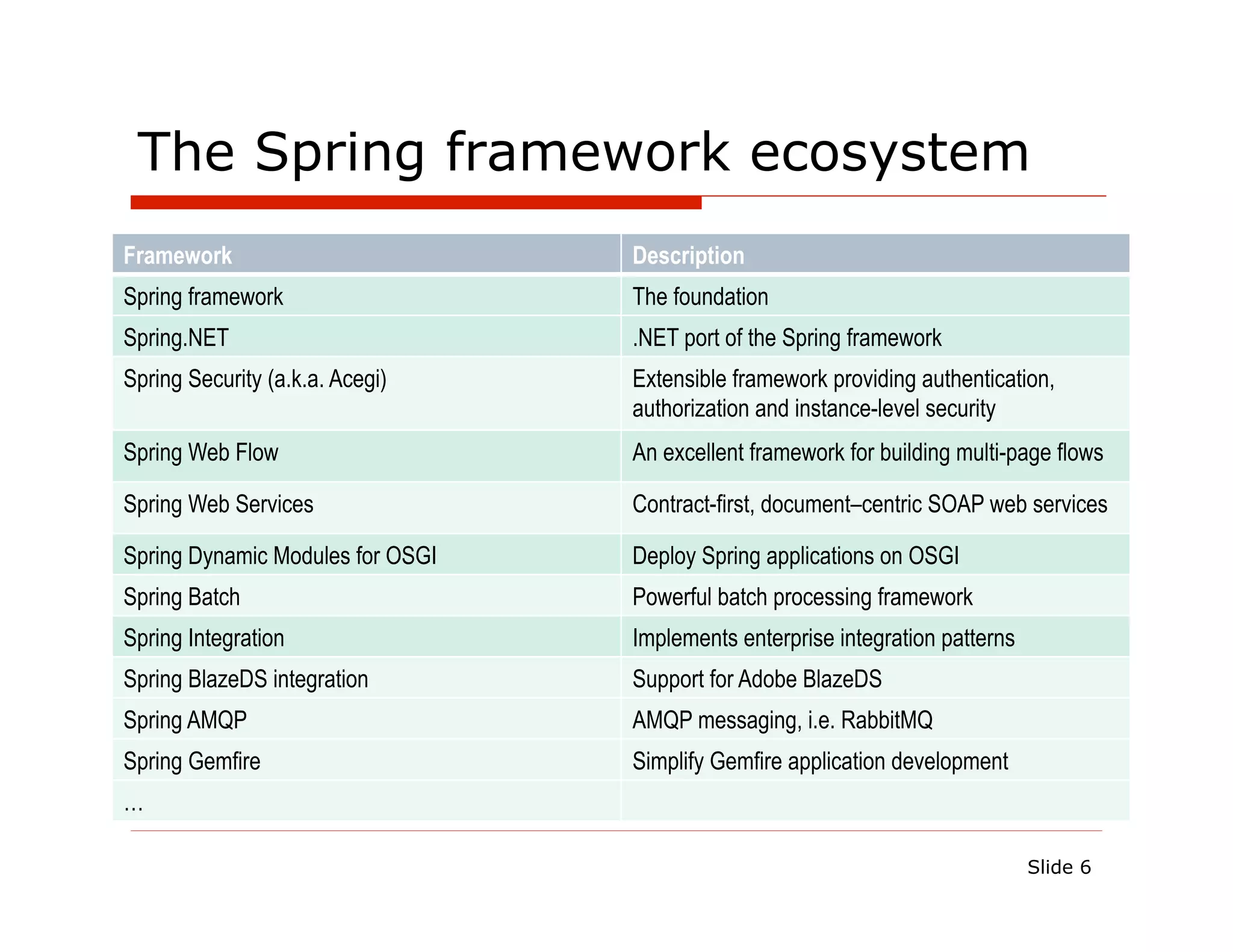
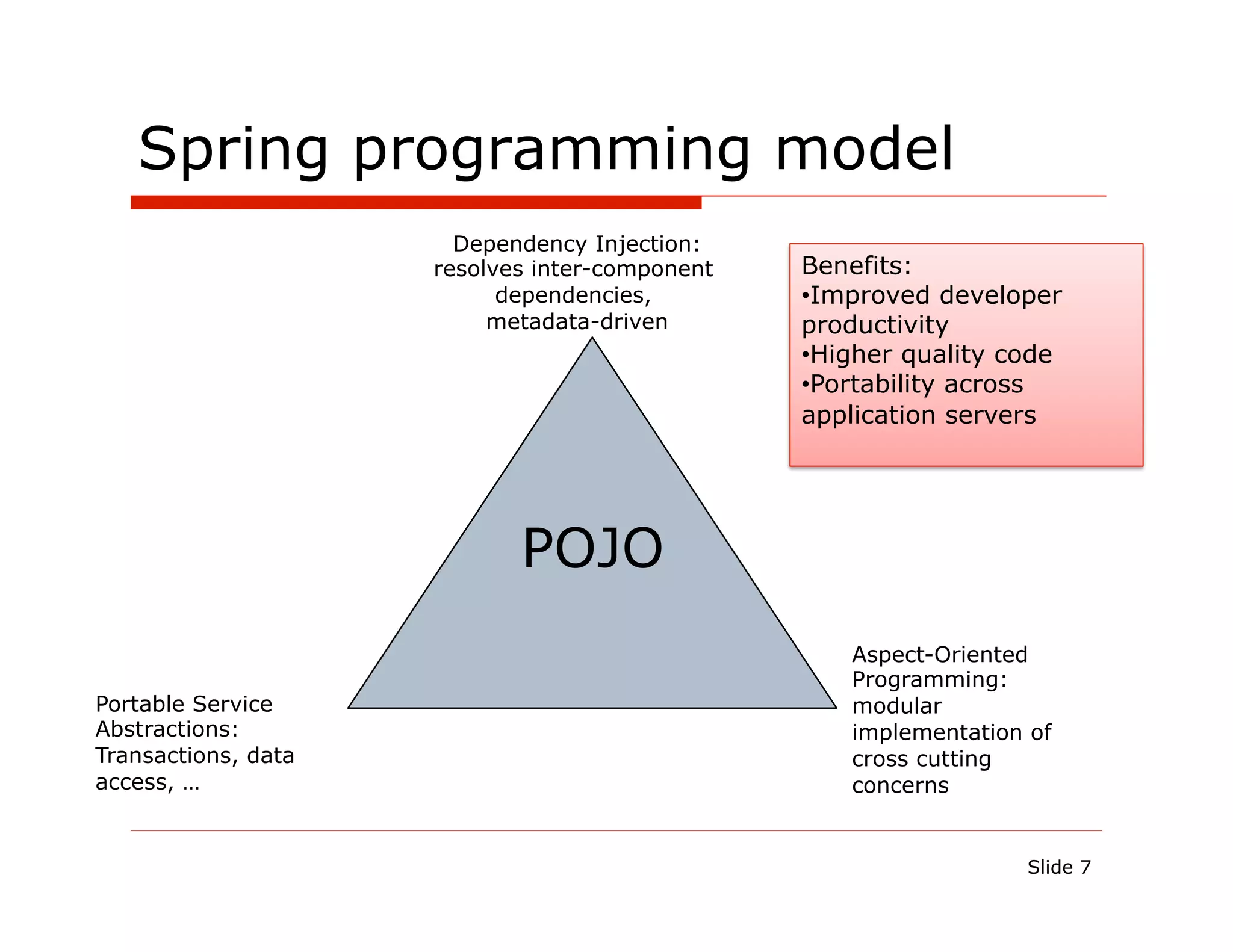
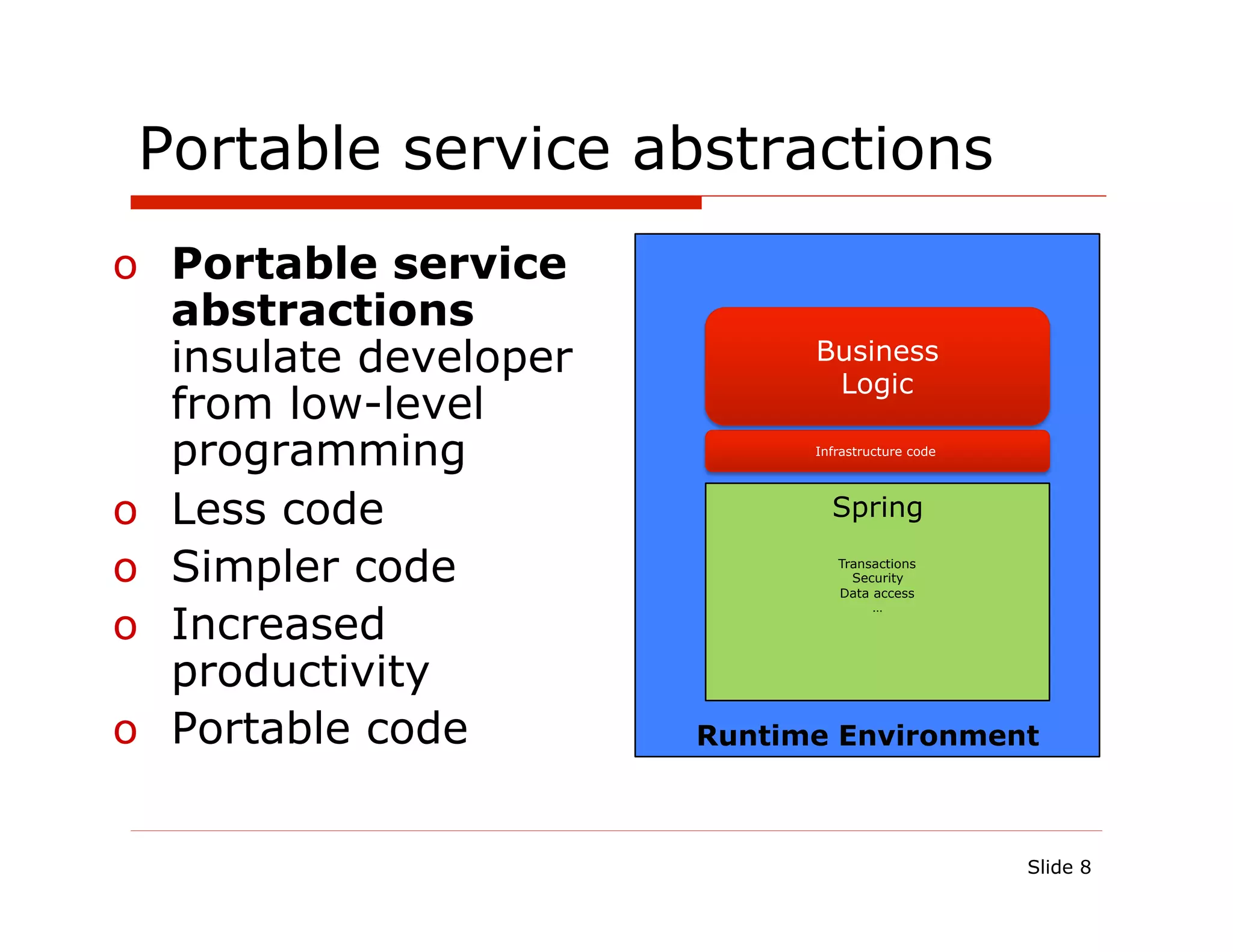
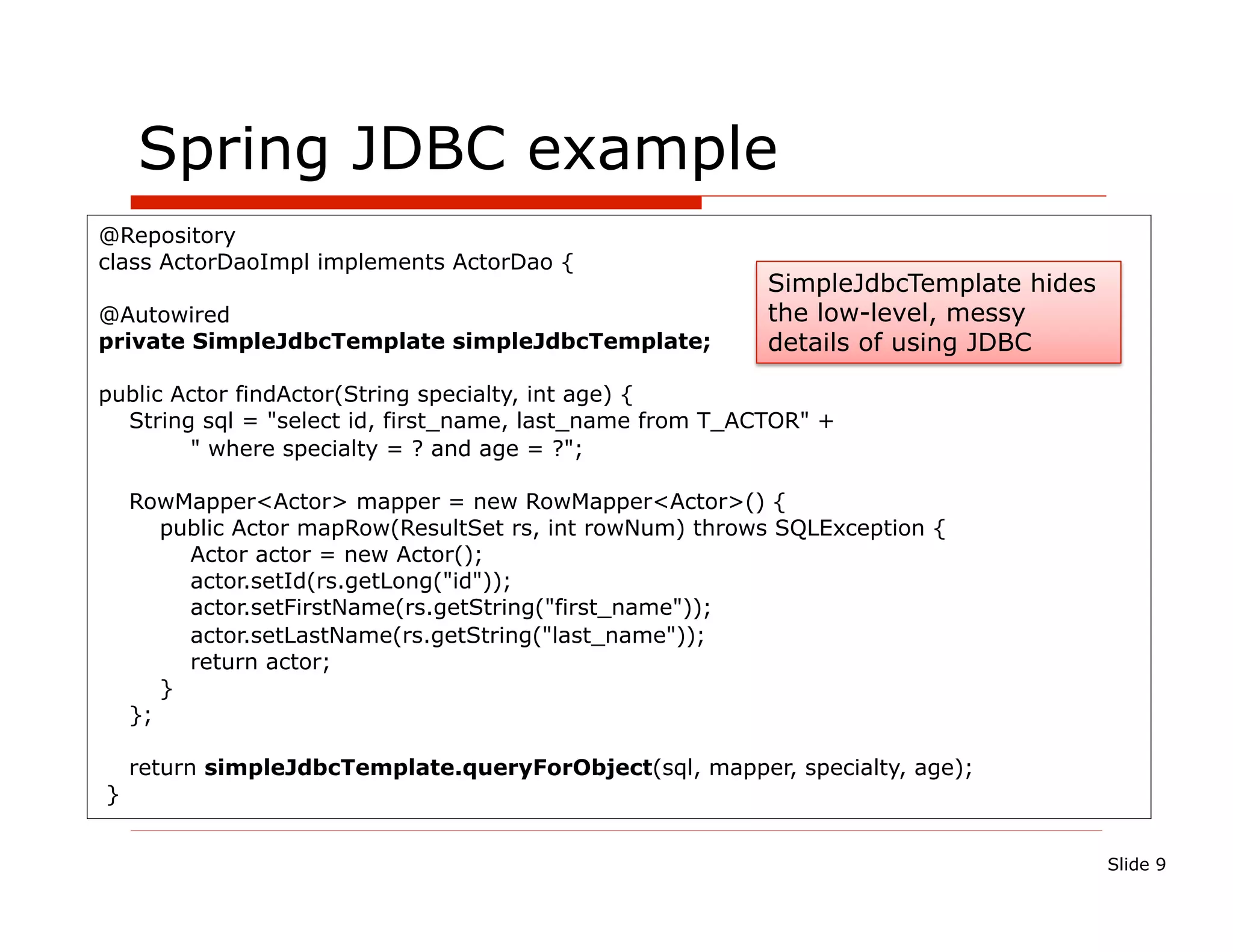
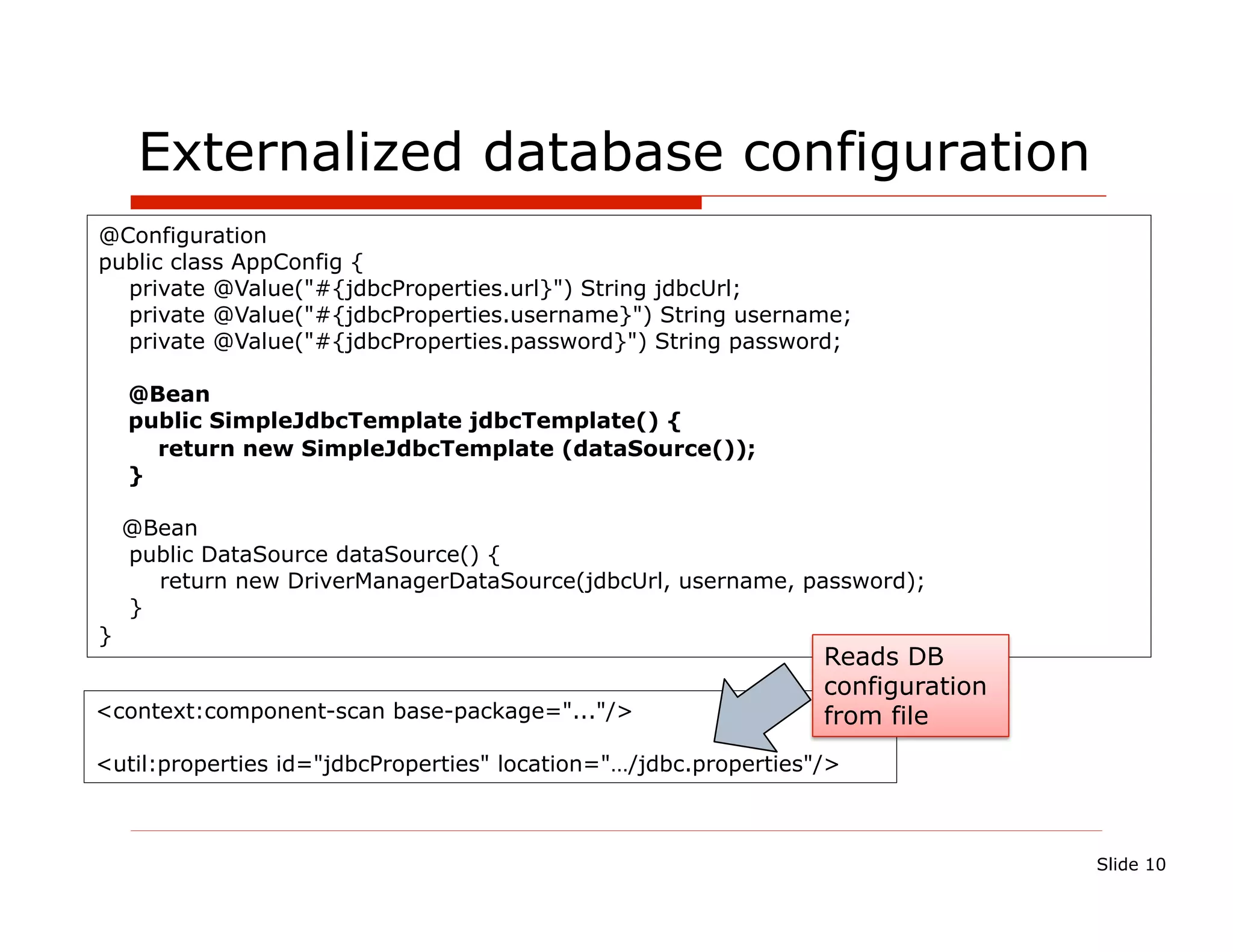
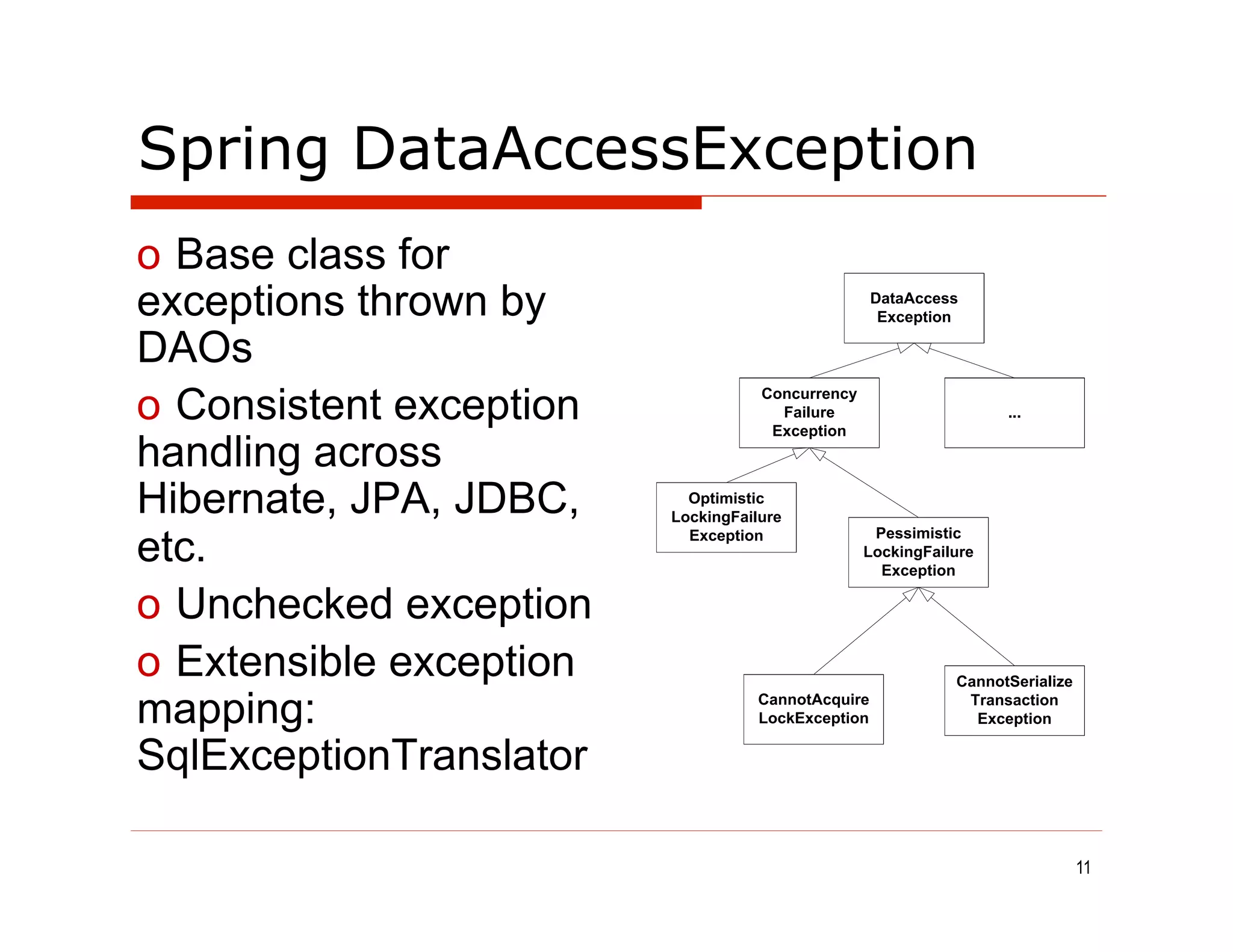
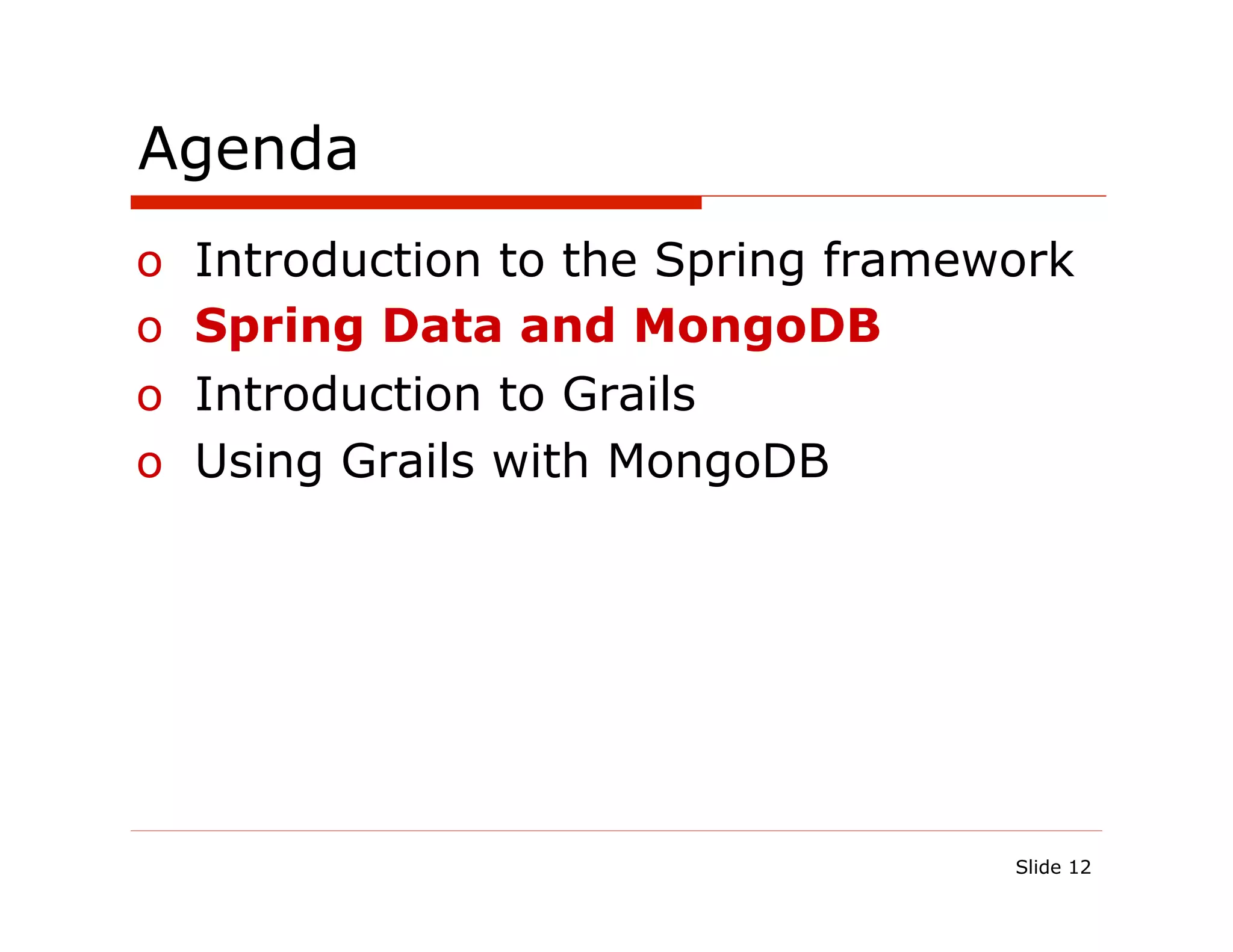
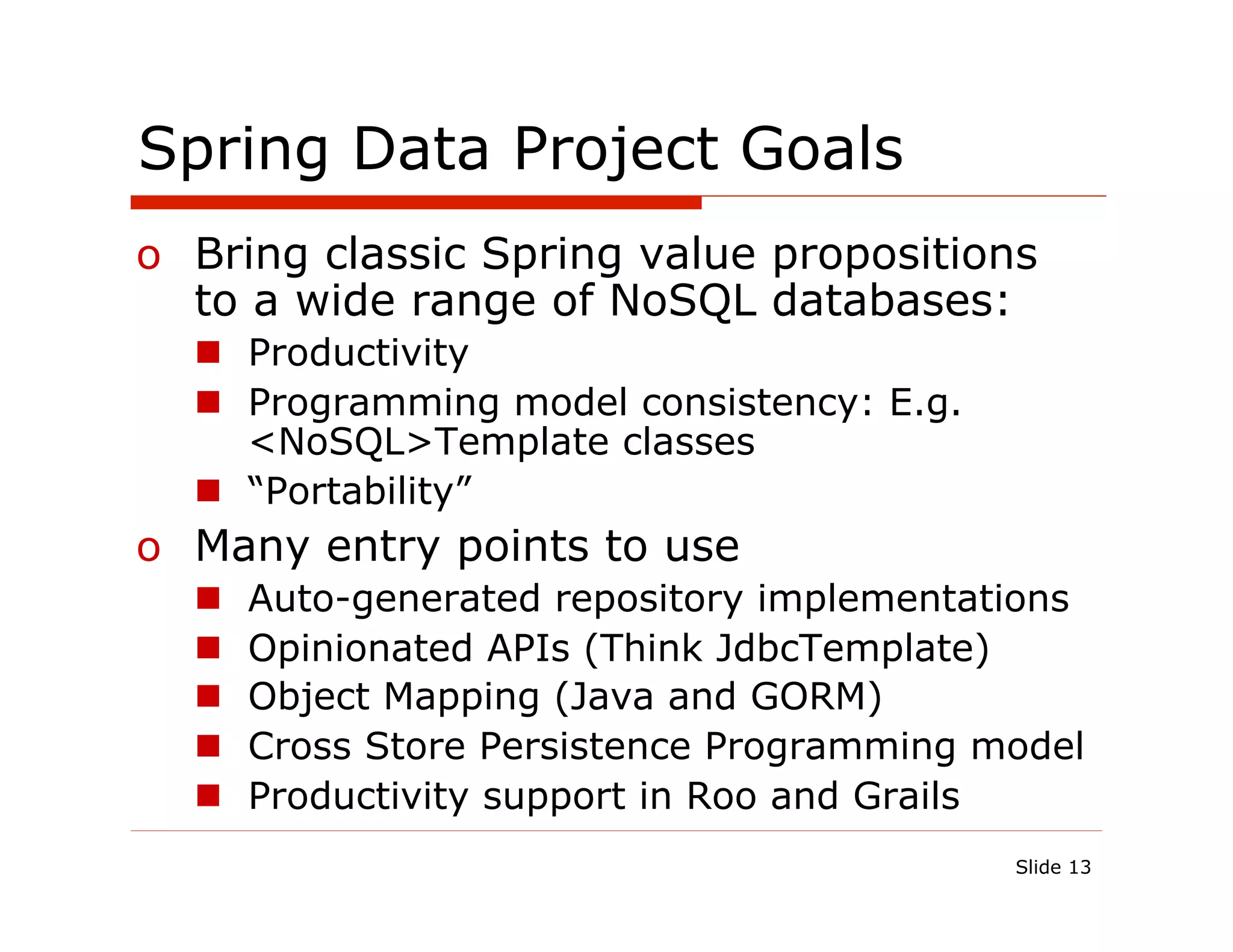
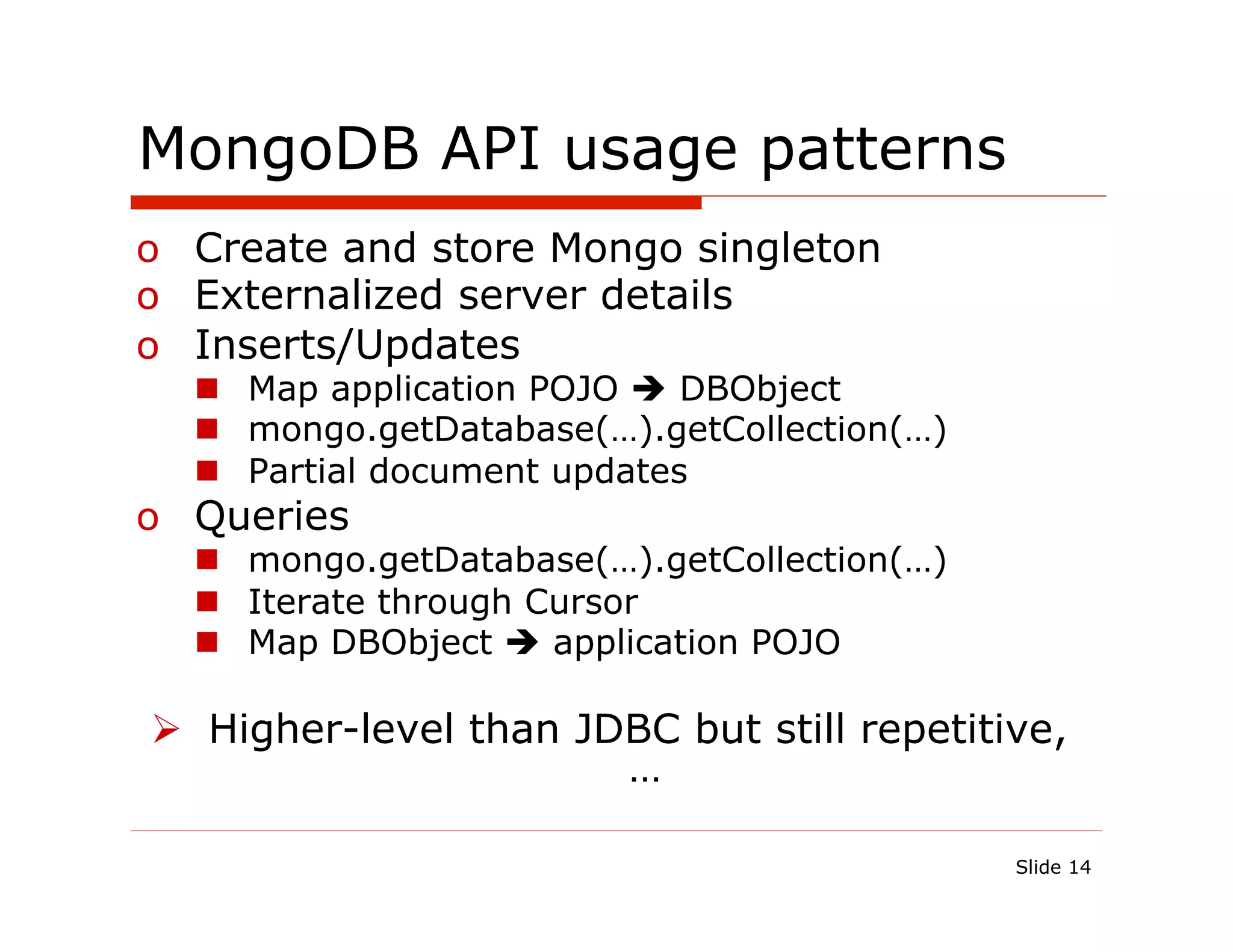
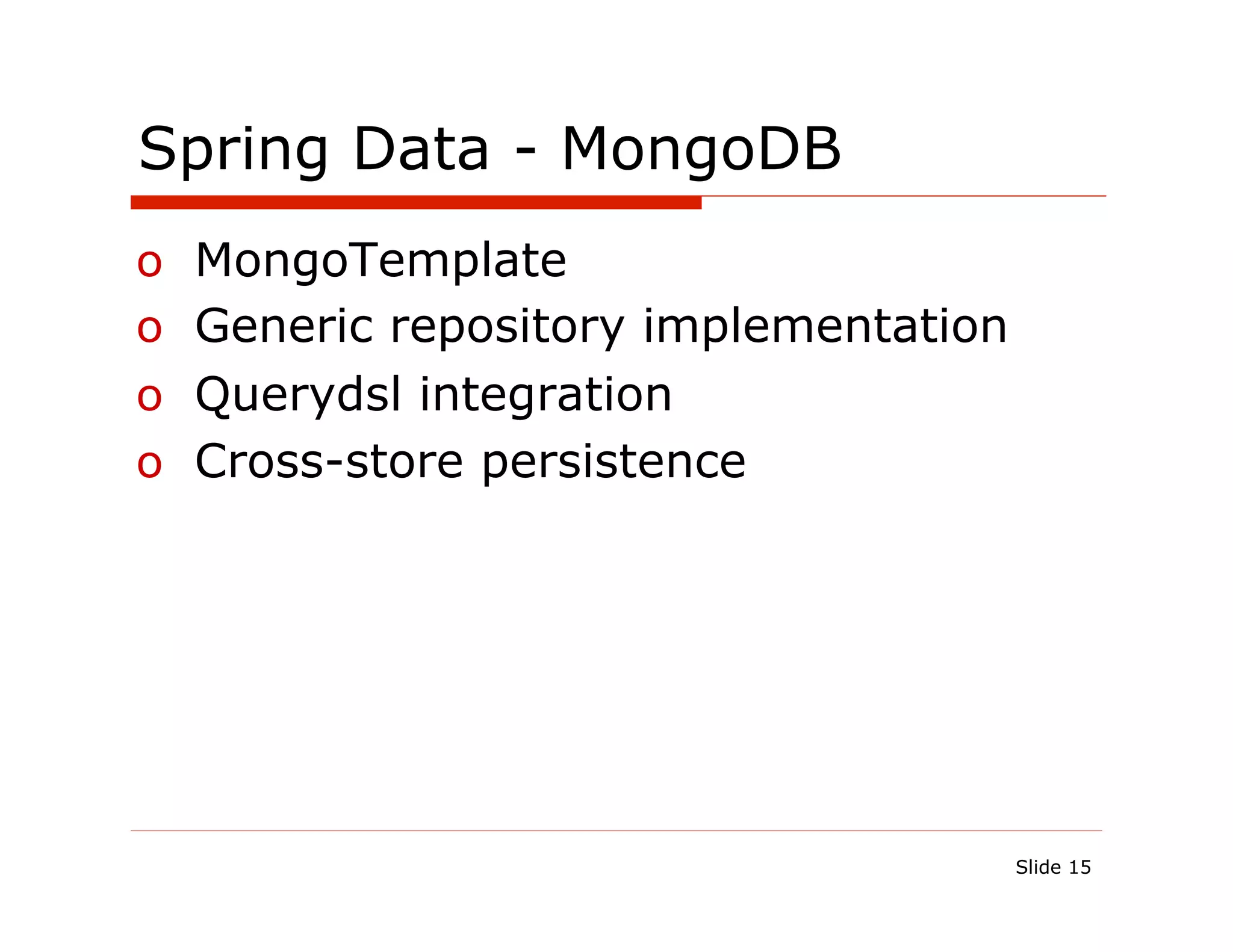
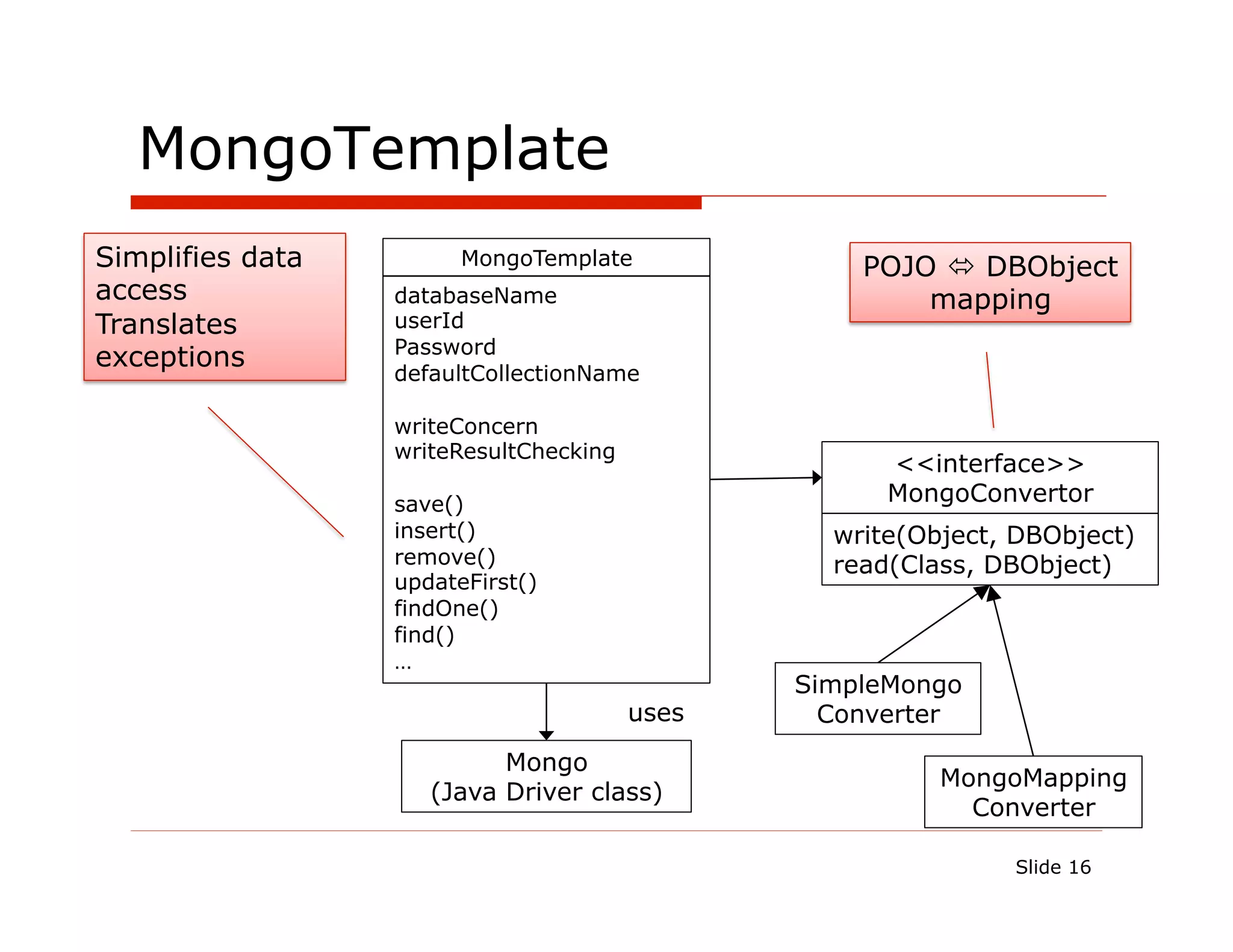
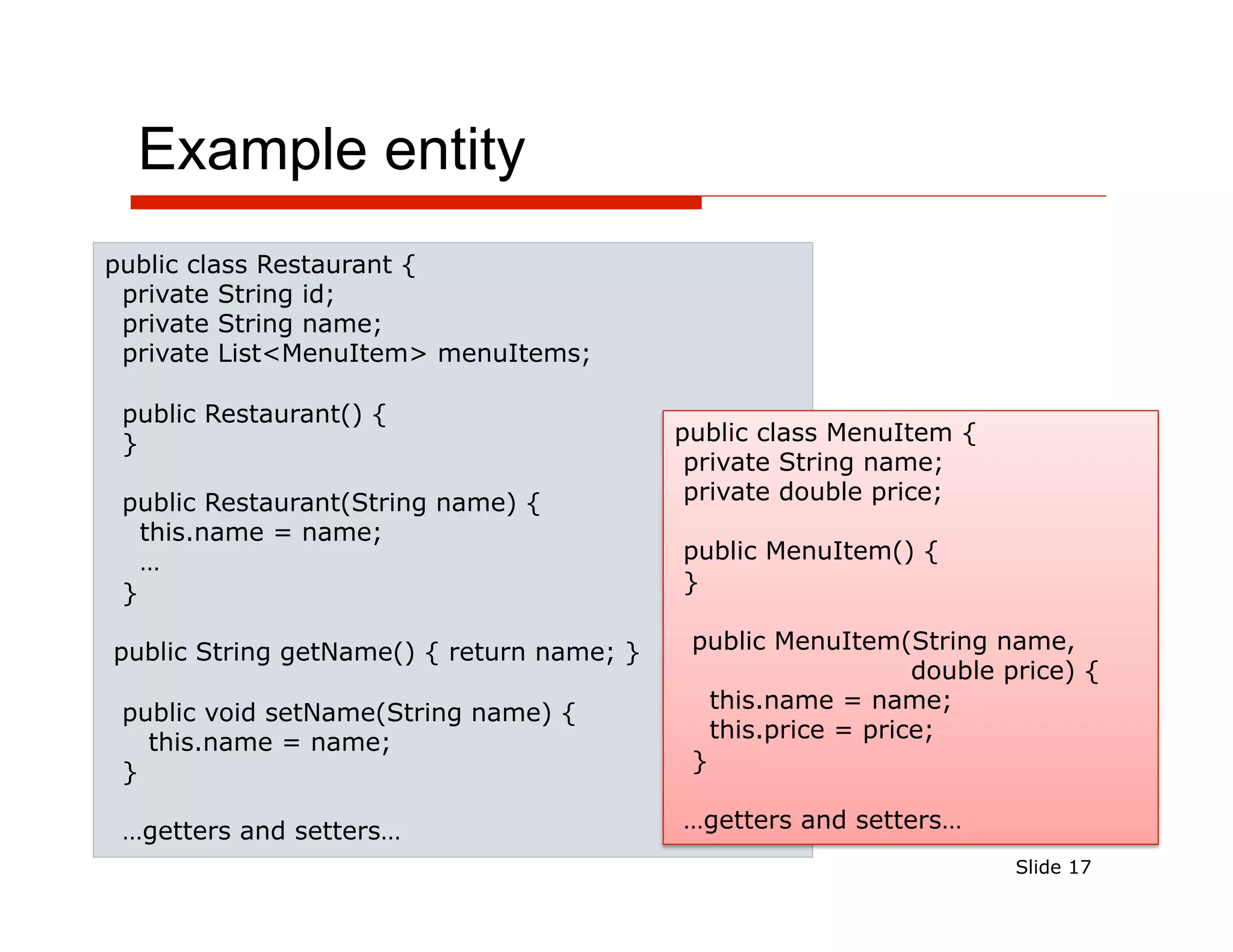
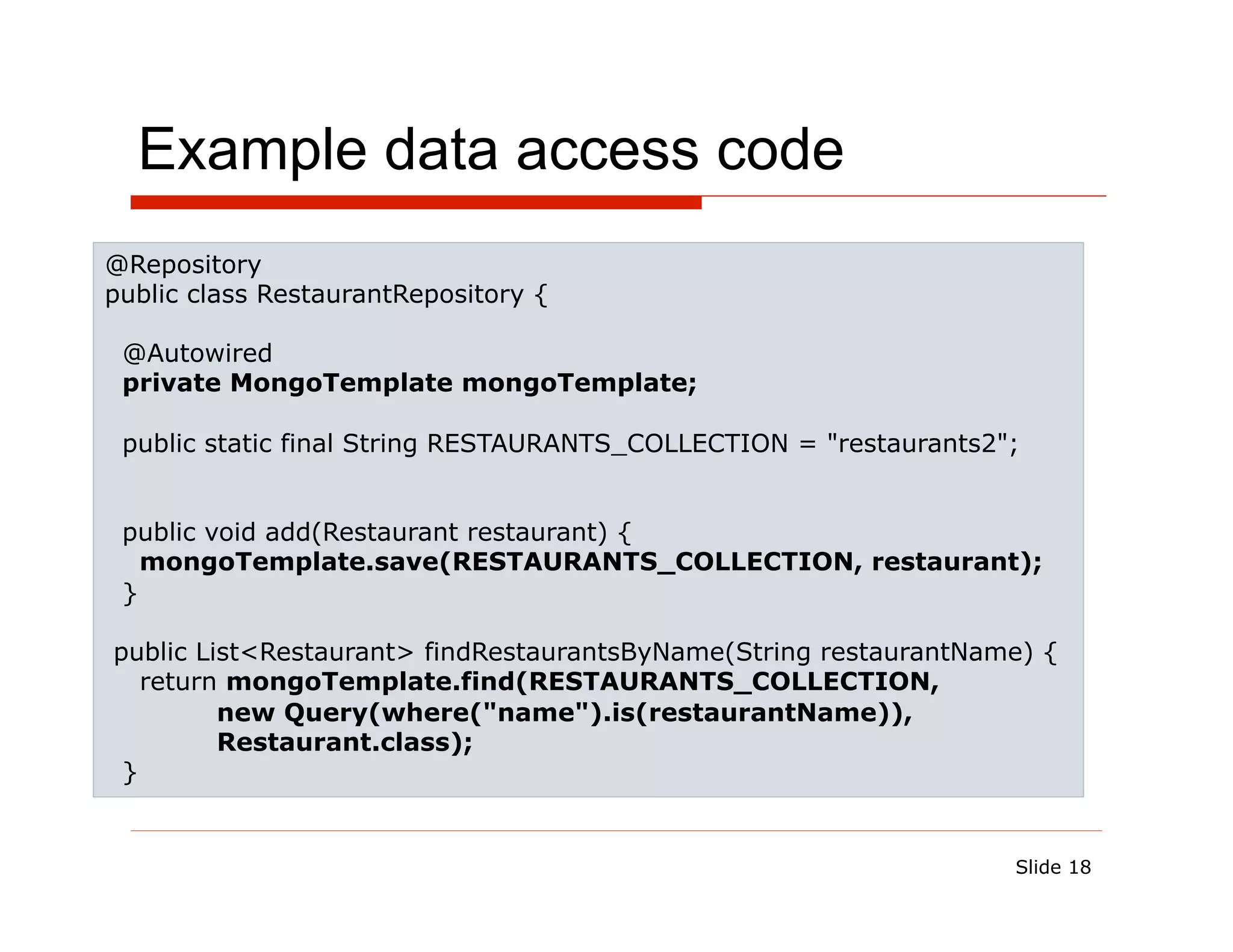
![Mongo document { "_id" : ObjectId("4d977f55d3fe3119c904e026"), "menuItems" : [ { "name" : "Tandoori Portobello Mushrooms", "price" : 5.5 }, { "name" : "Duck Curry Kerala", "price" : 15 } ], "name" : "Ajanta" } Slide 19](https://image.slidesharecdn.com/springandmongophilly2011-110503160556-phpapp02/75/MongoDB-for-Java-Developers-with-Spring-Data-19-2048.jpg)
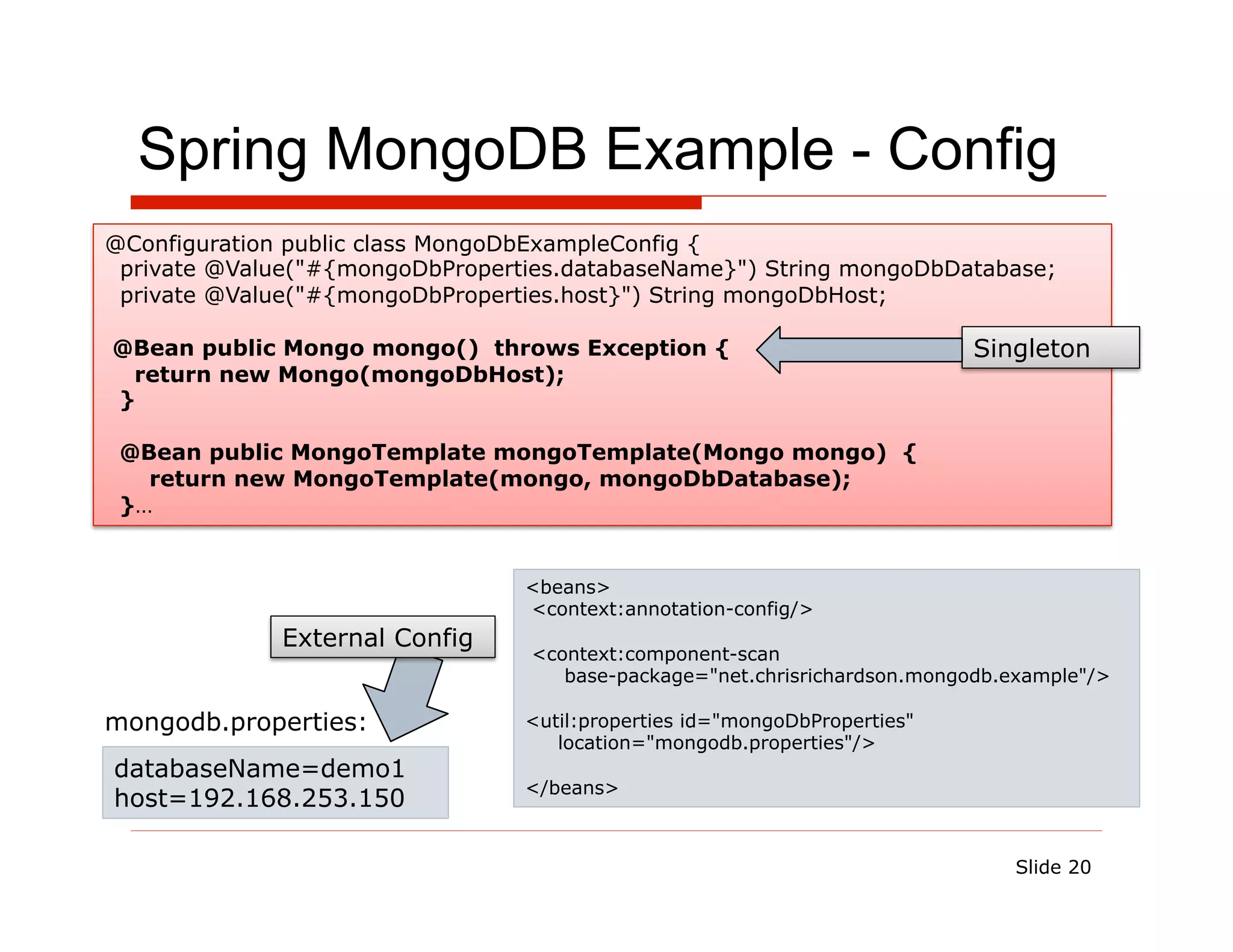
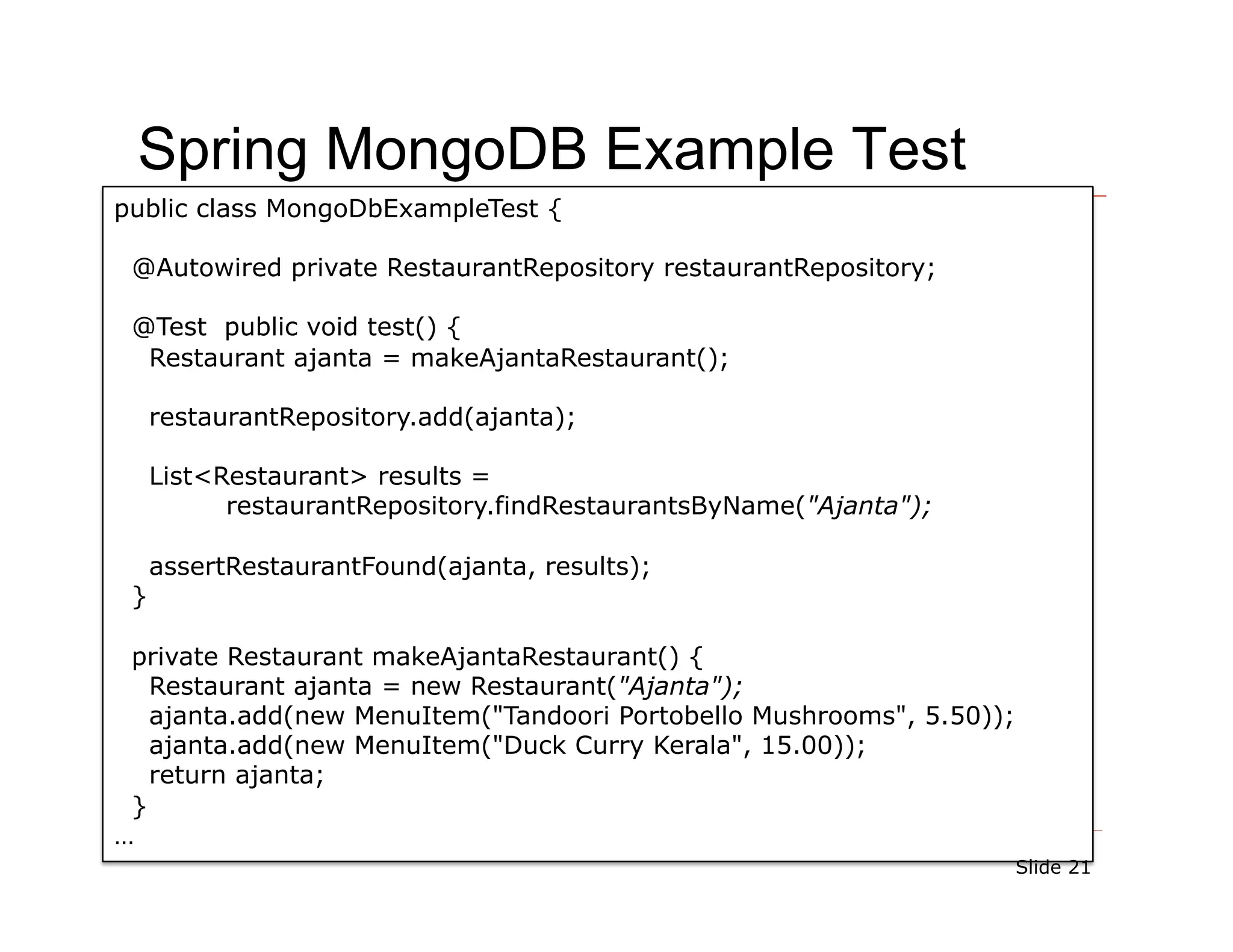
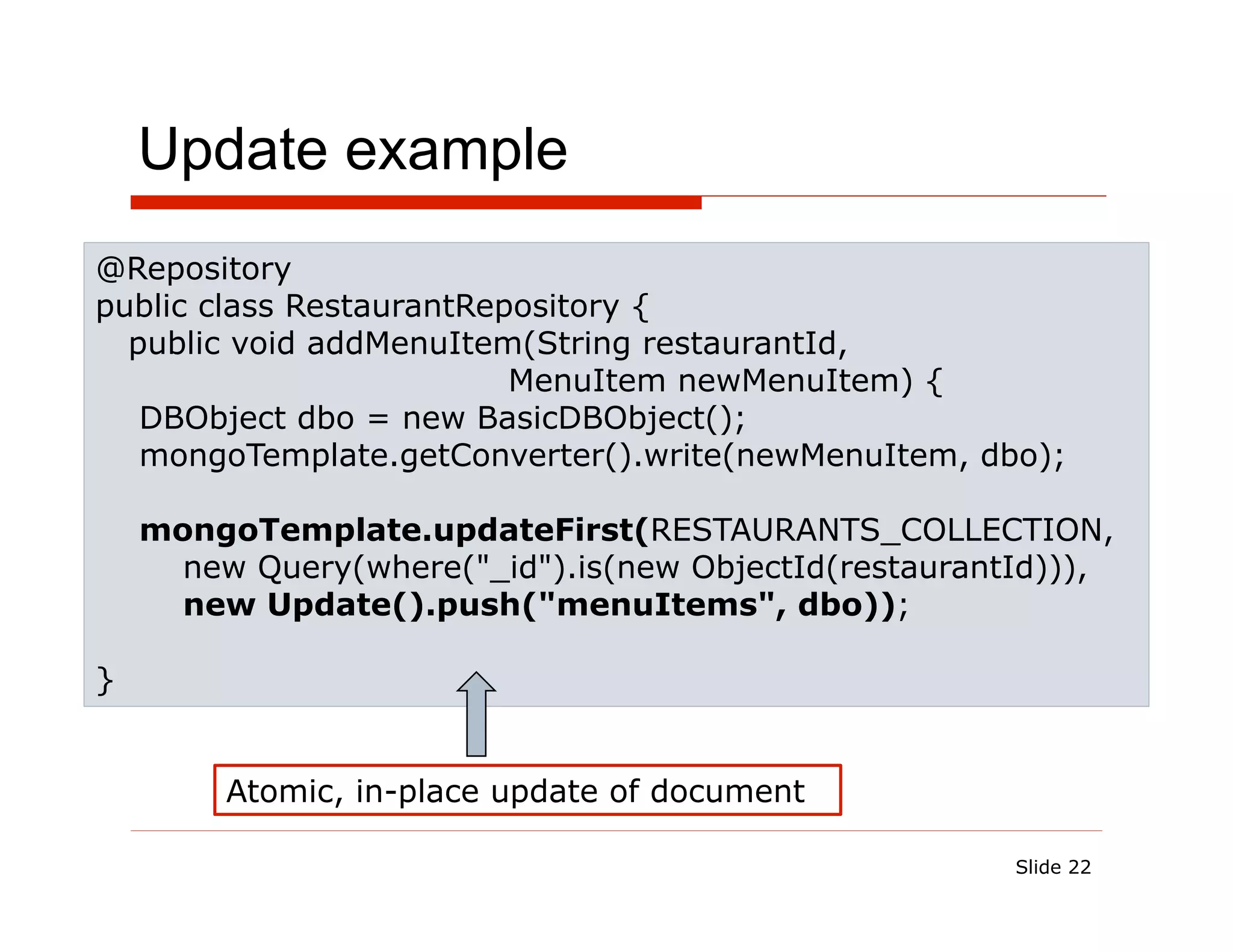
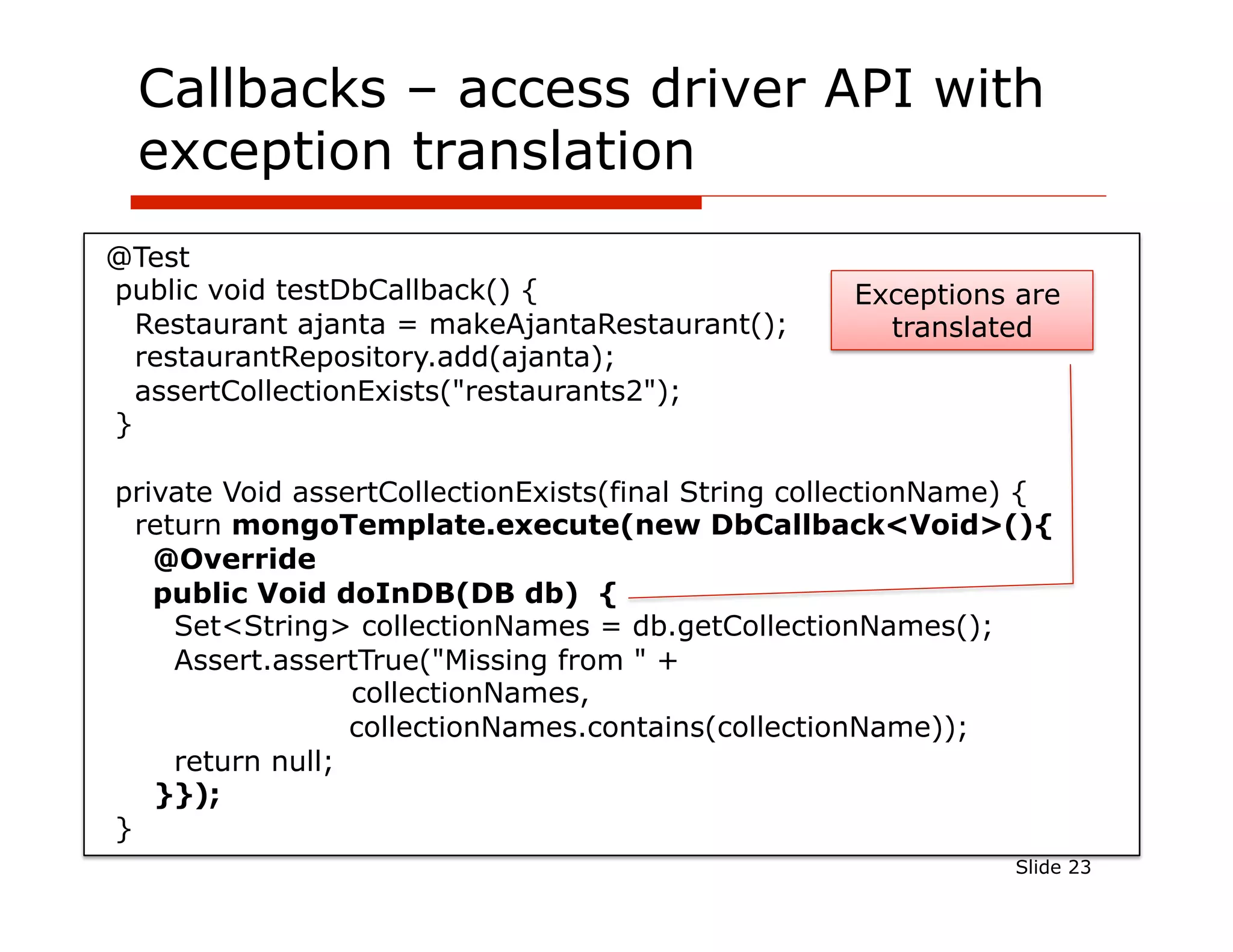
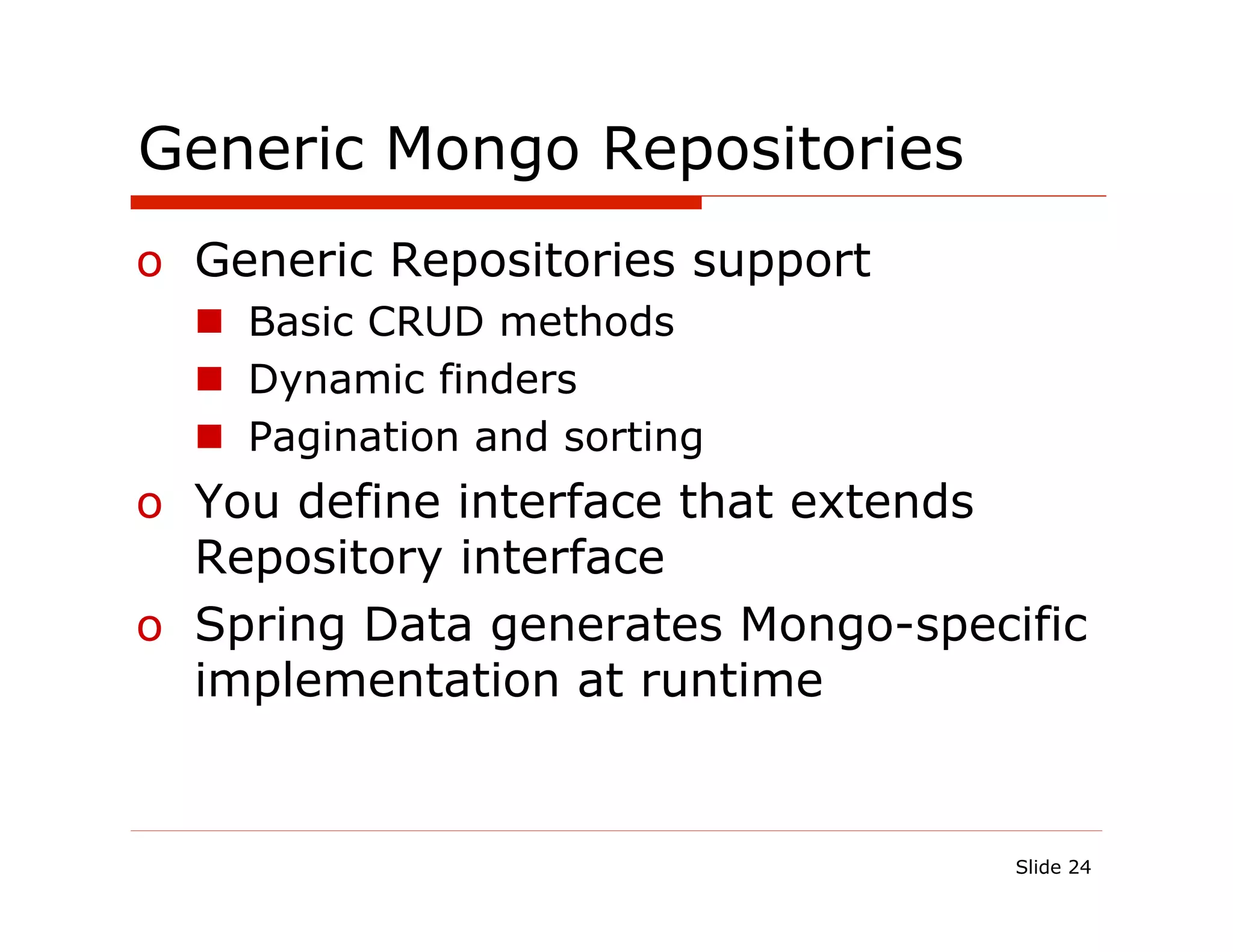
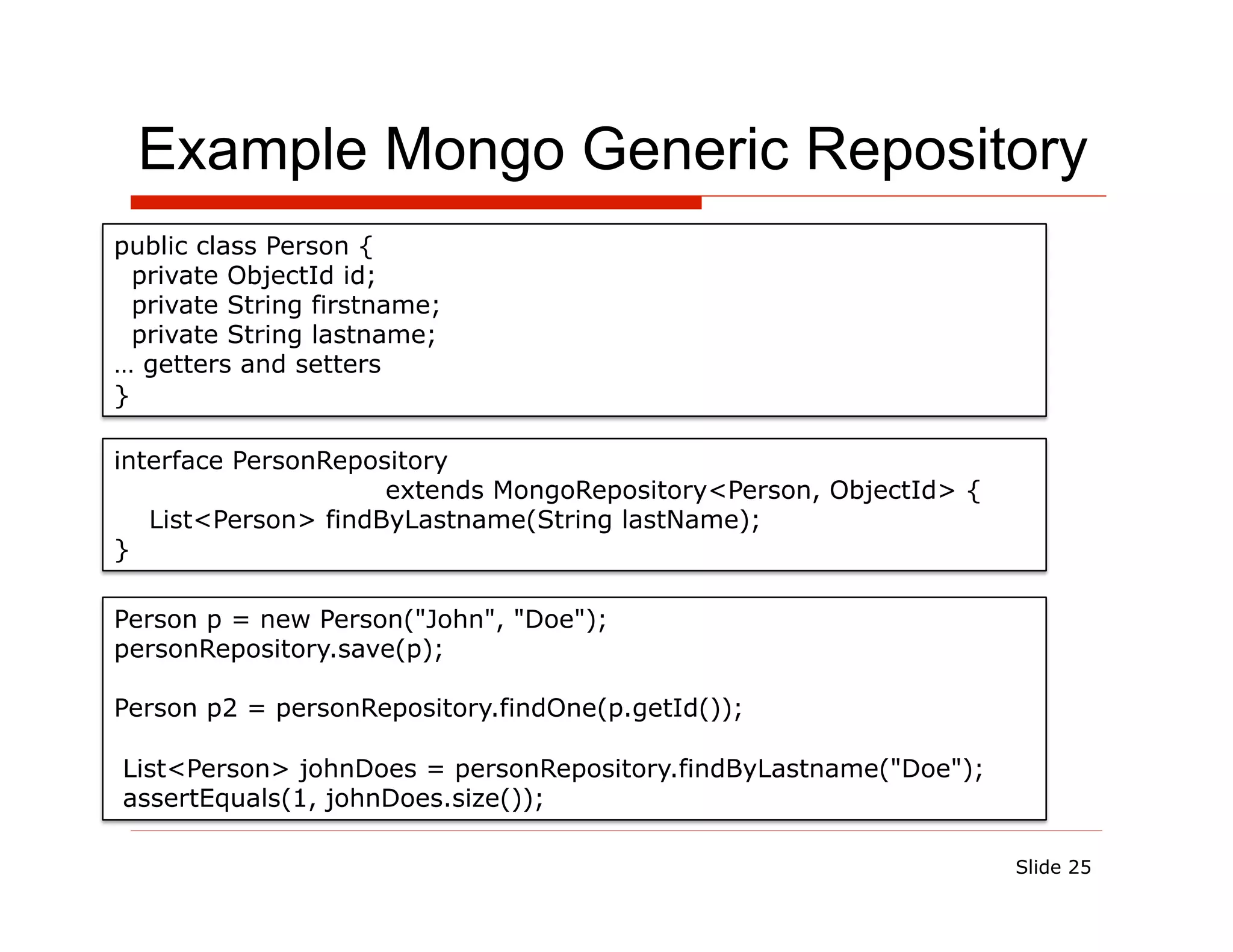
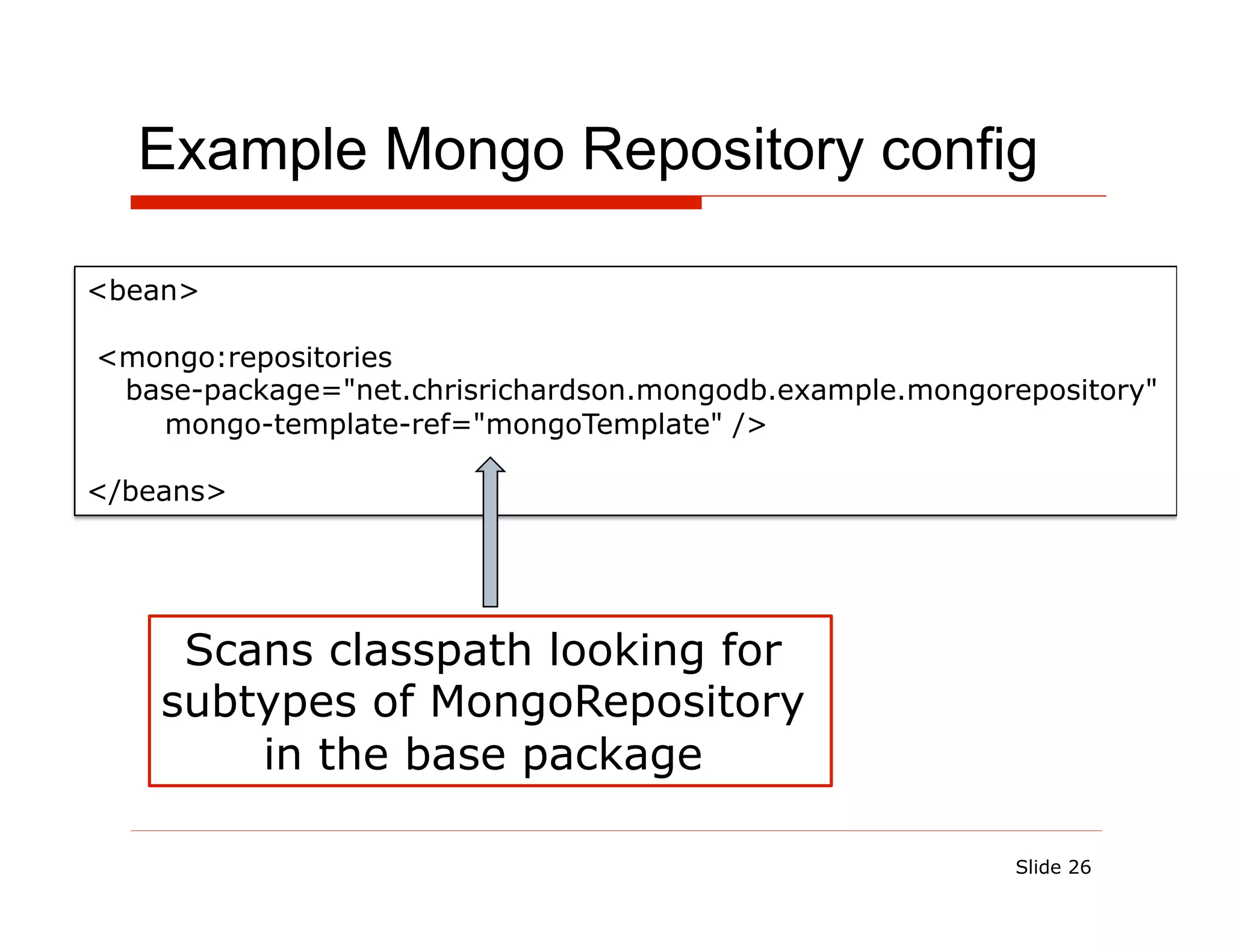
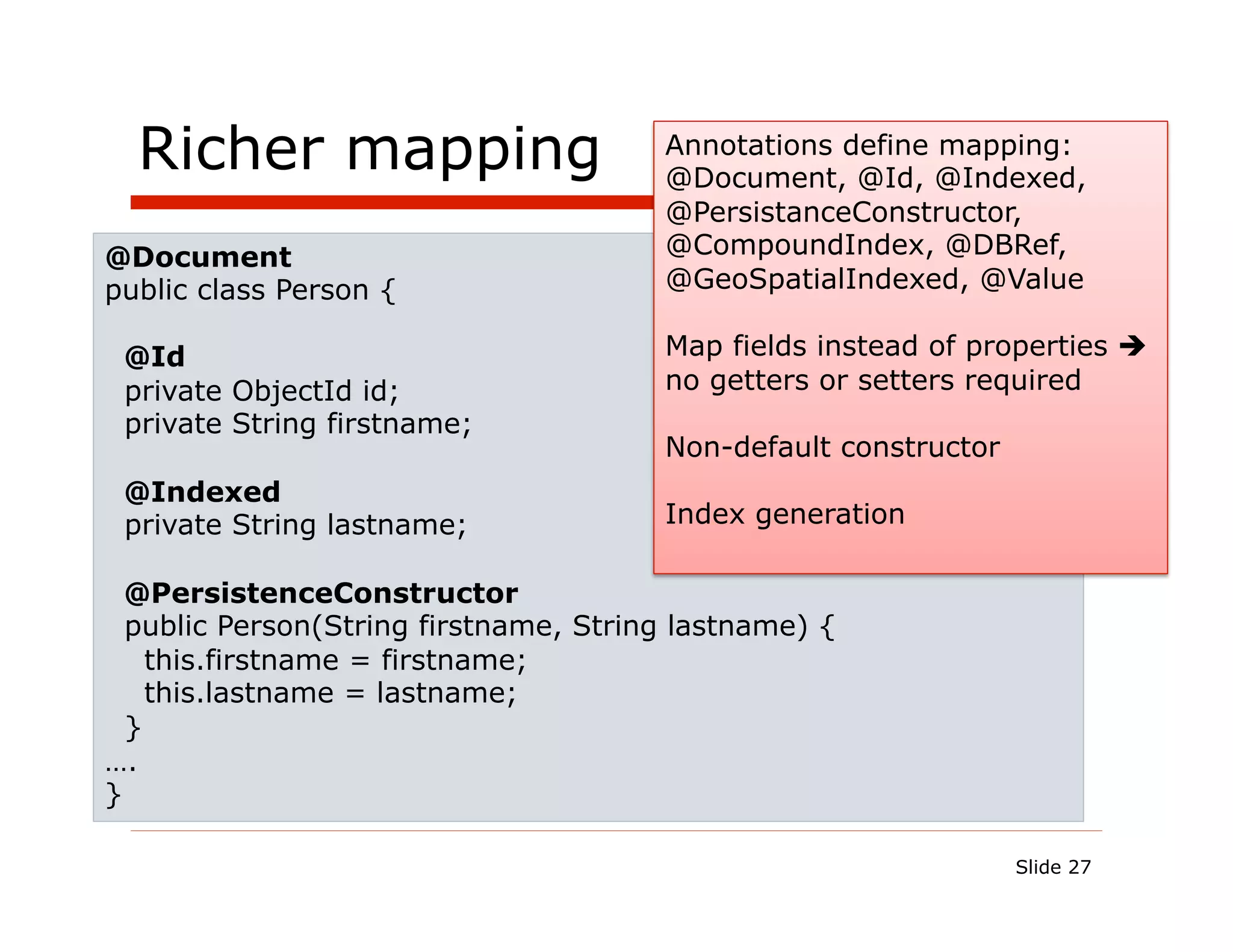
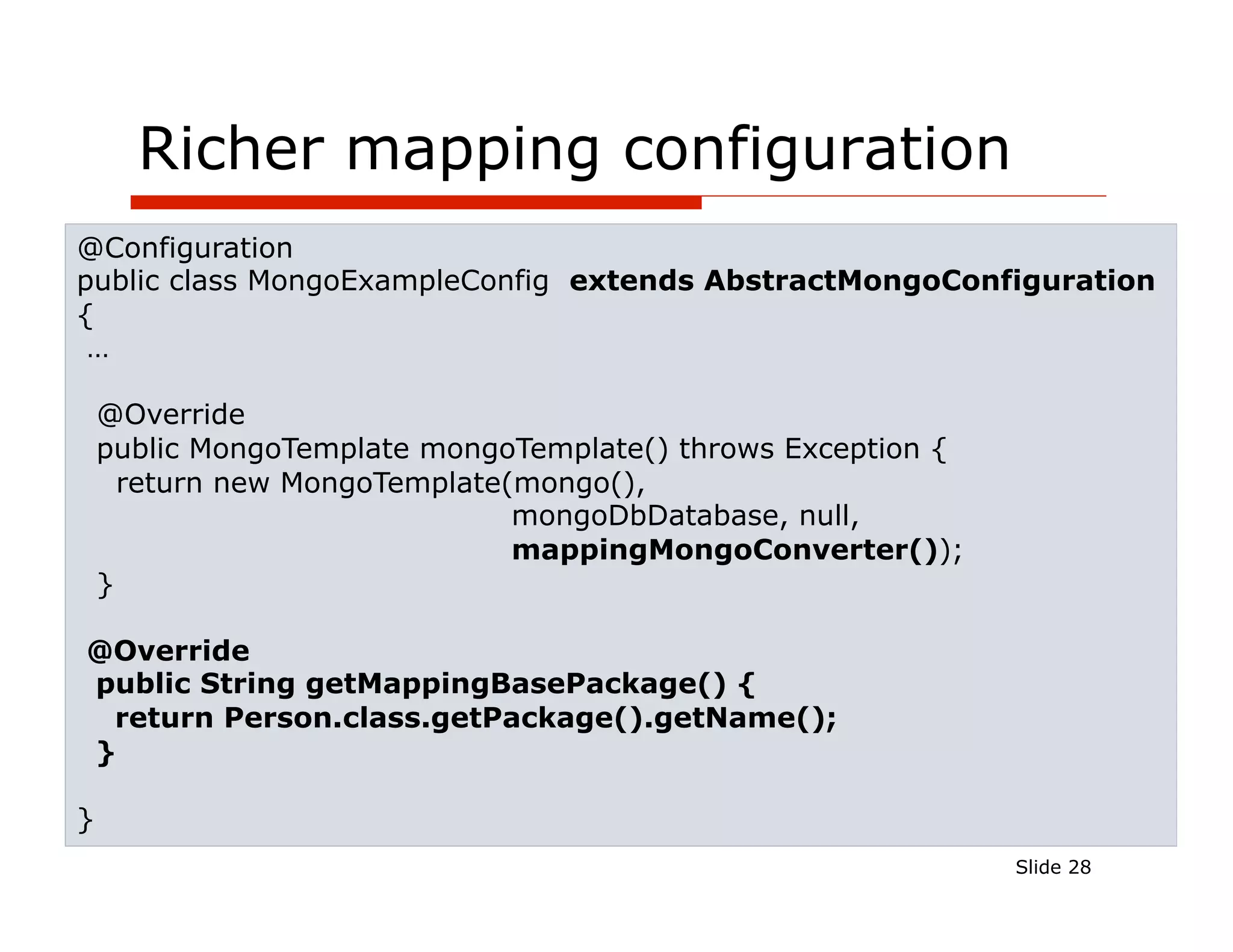
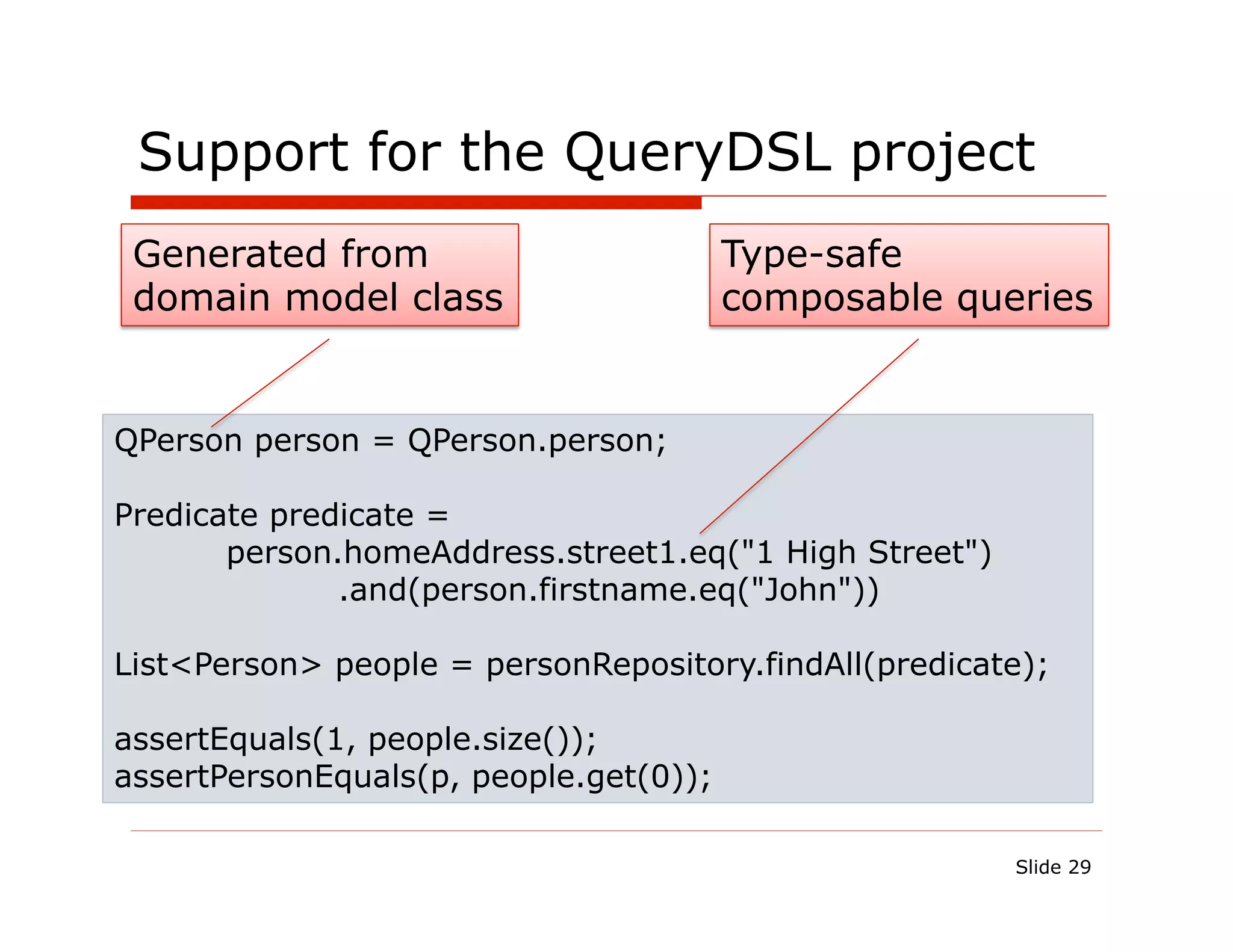
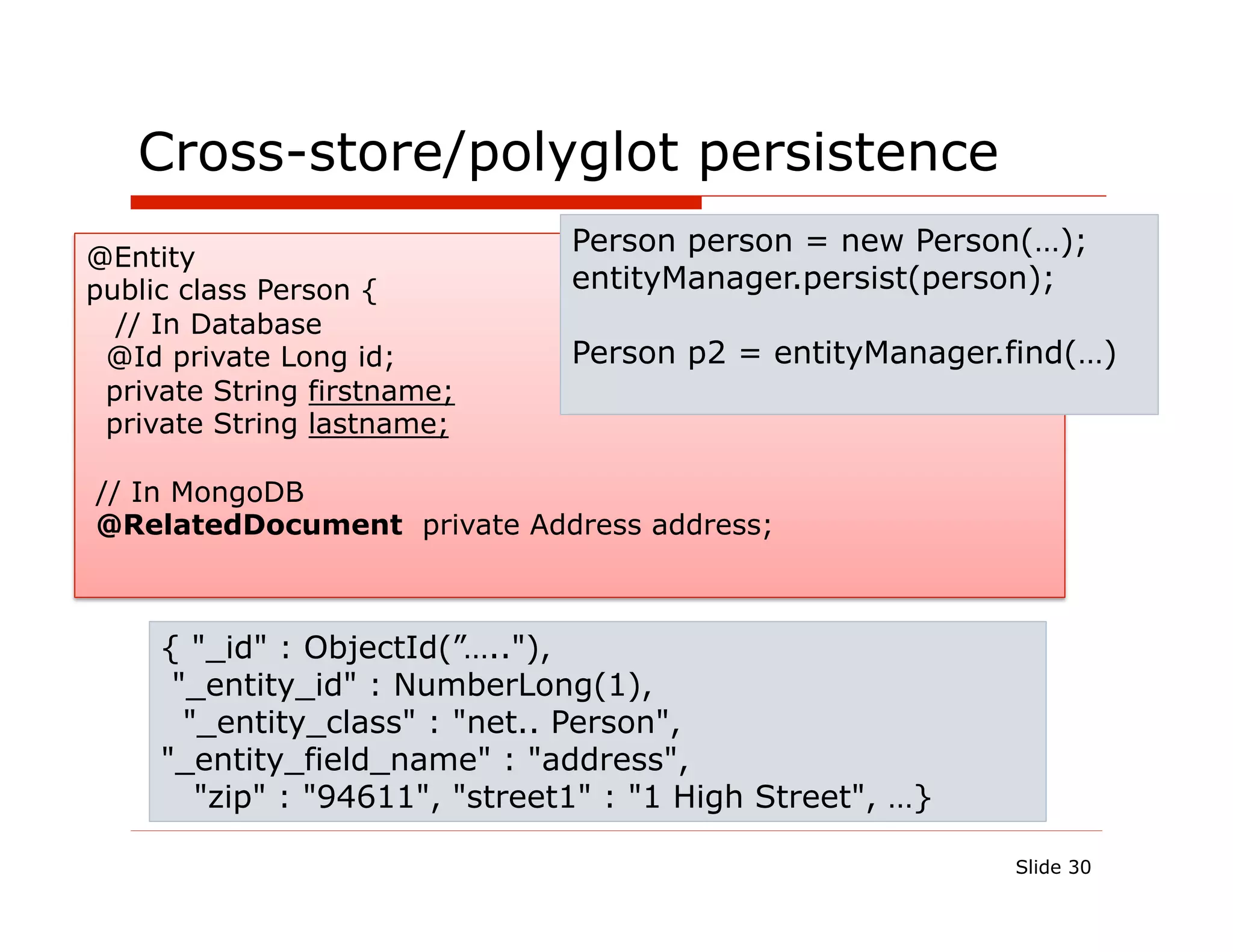
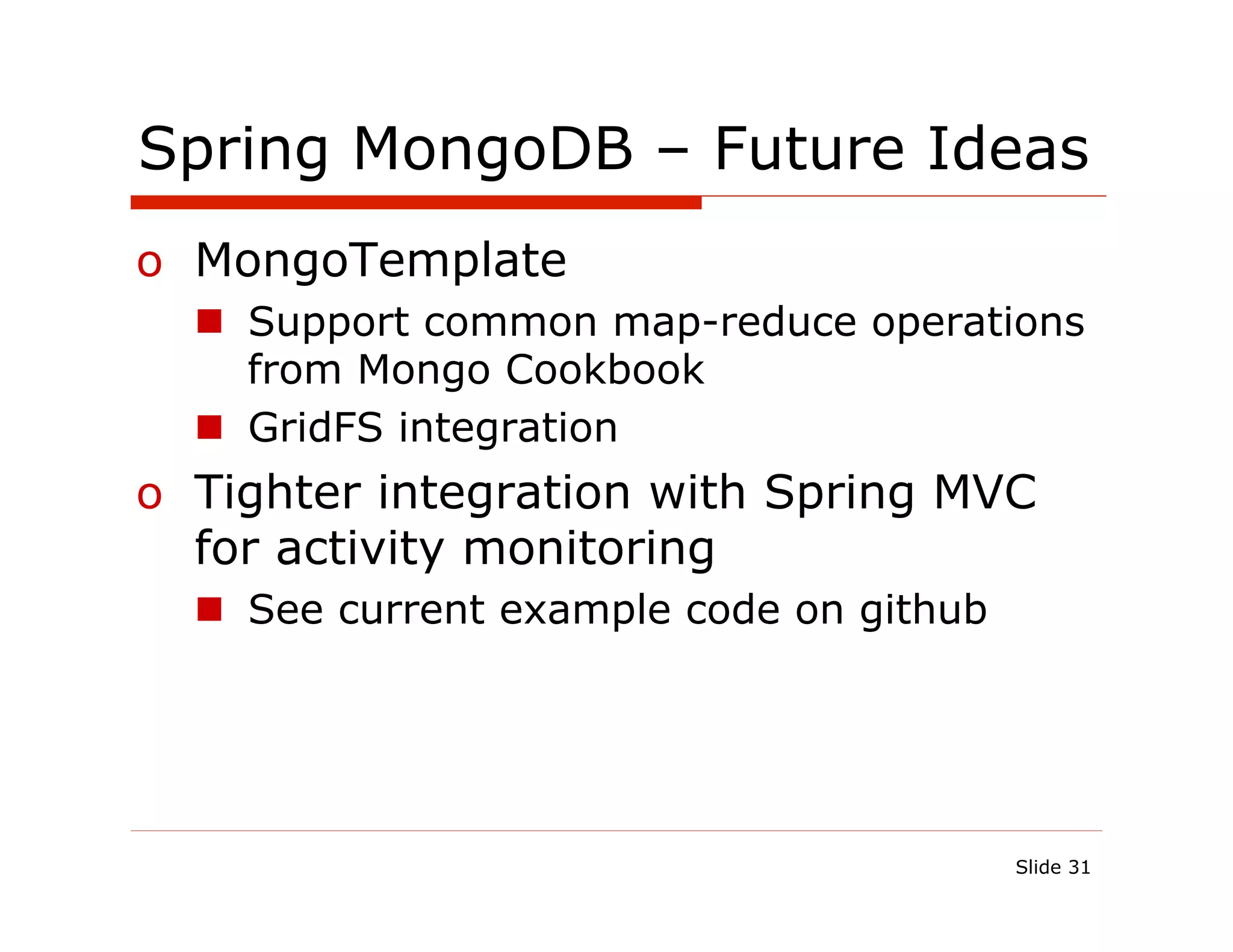
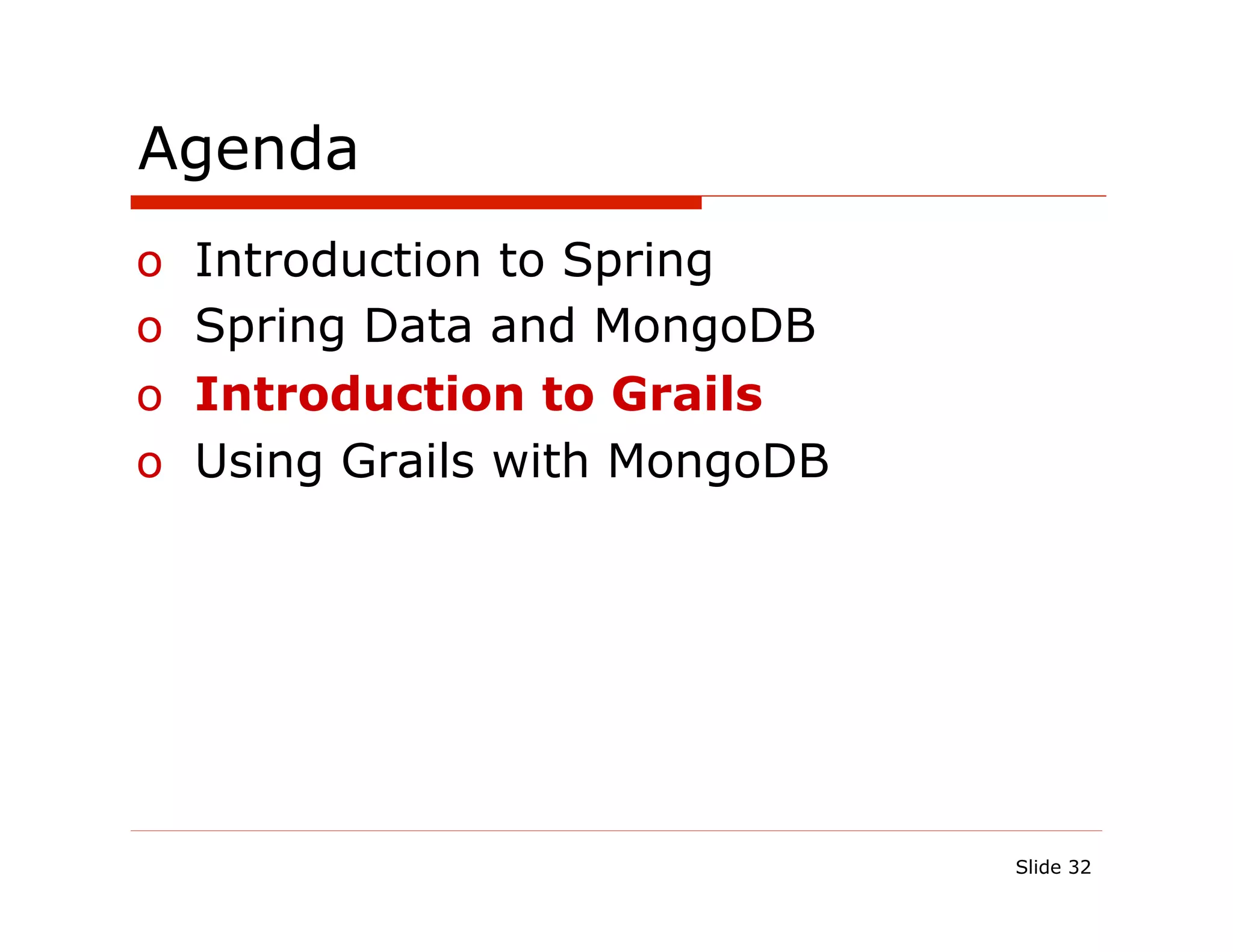
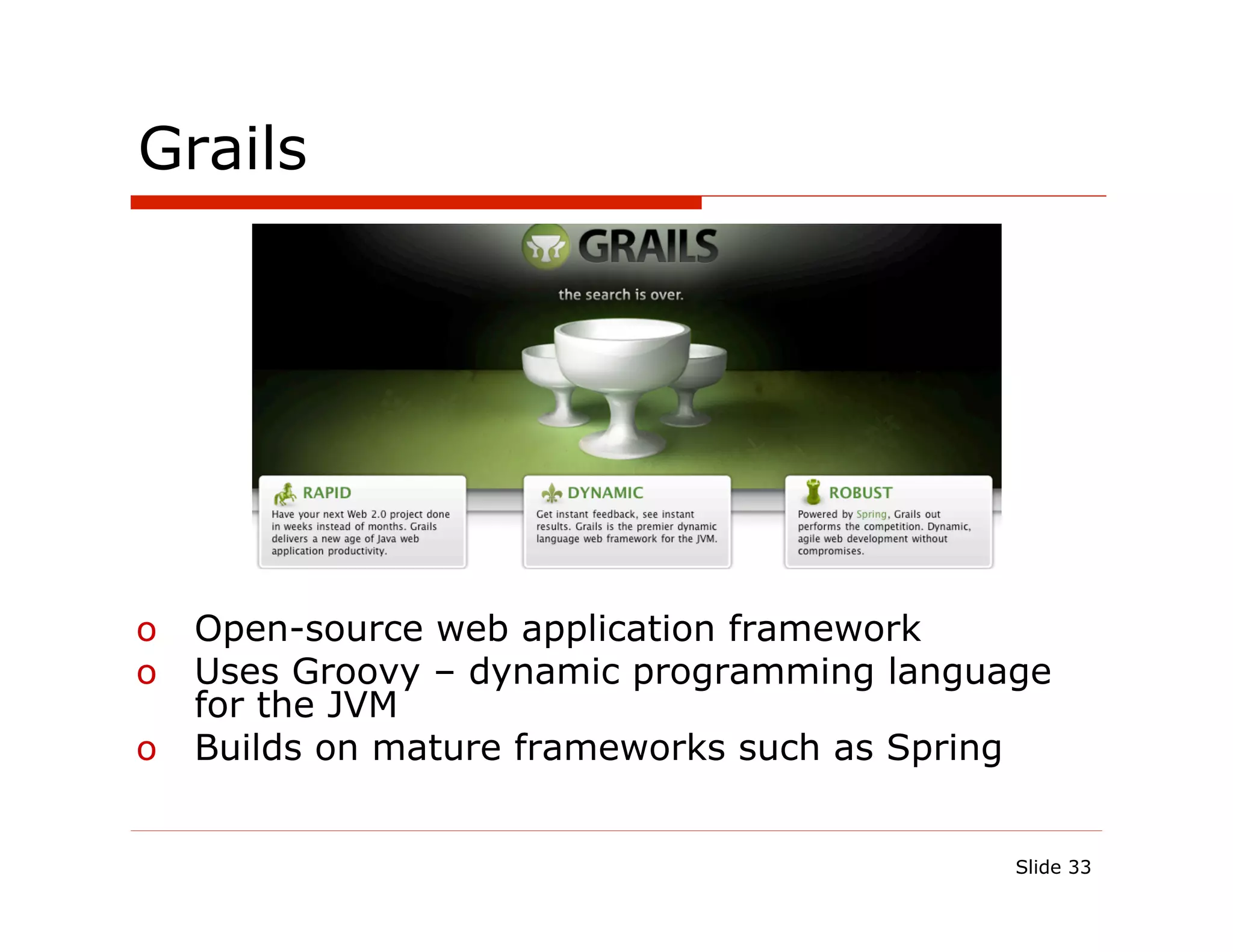
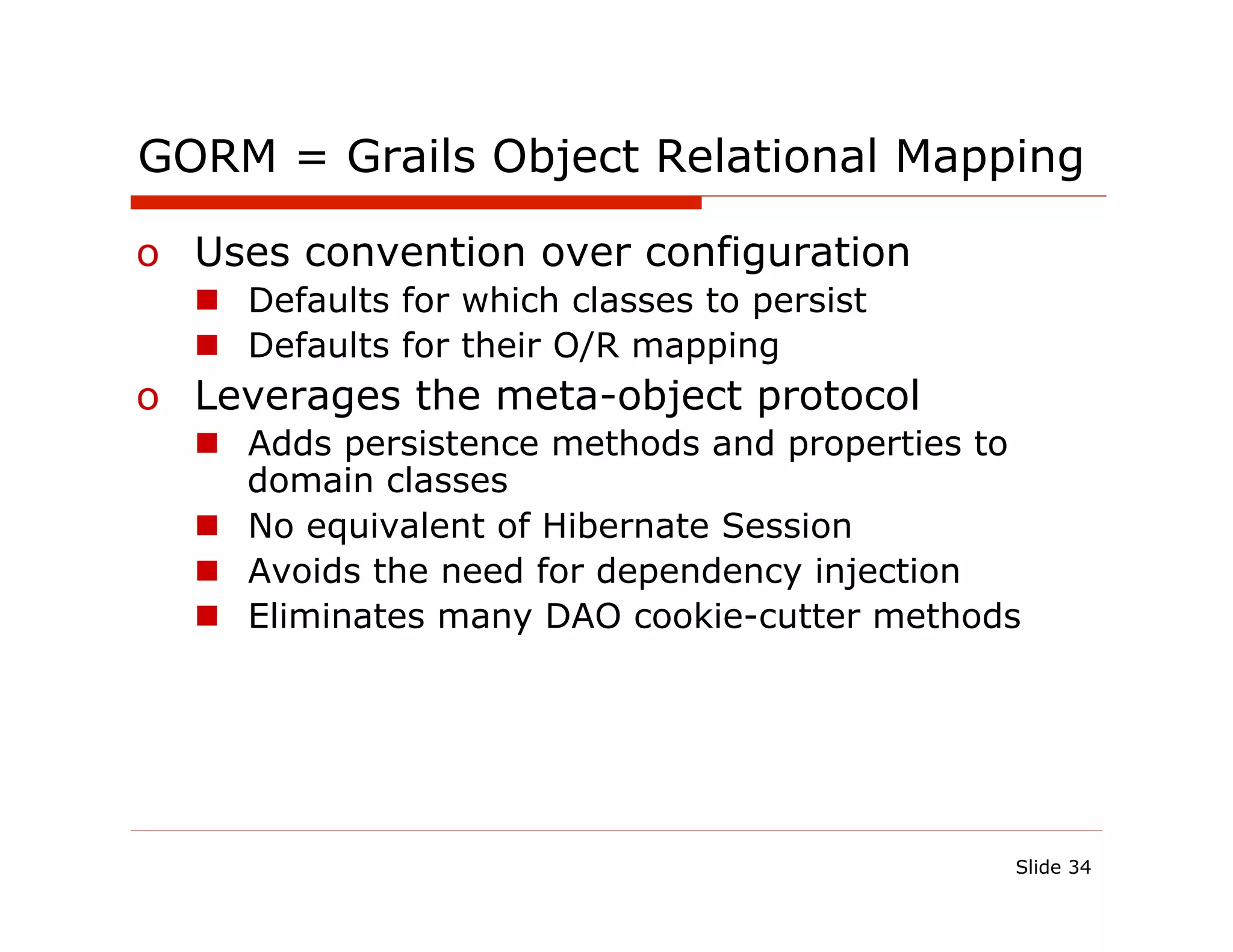
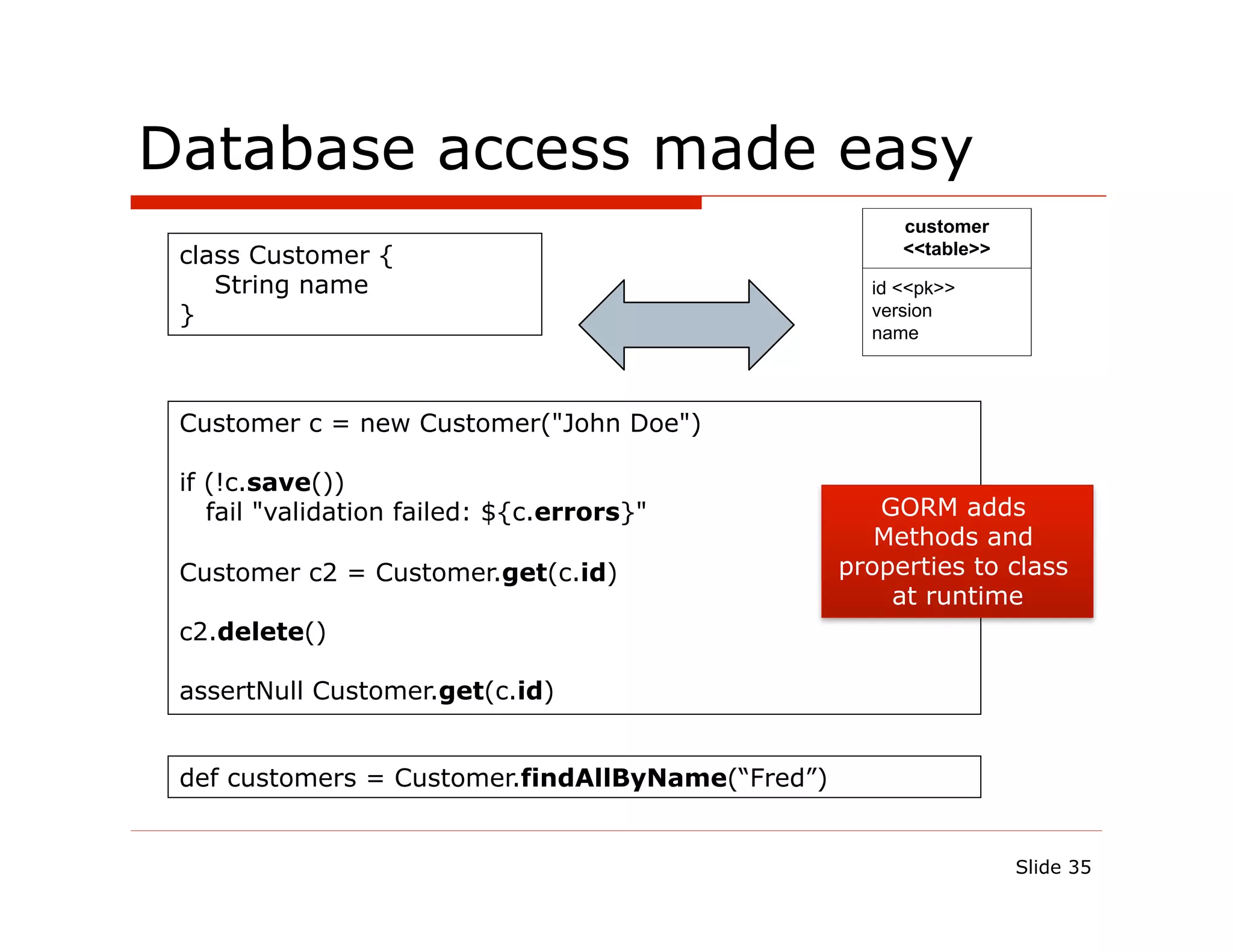
![Relationships don’t have to be difficult customer class Customer { <<table>> String name id <<pk>> static hasMany = [ accounts : Account] version } name class Account { account static belongsTo = [customer: Customer] <<table>> double balance id <<pk>> } version customer <<fk>> Customer c = <…> balance Account a = new Account(…) c.addToAccounts(a) assertSame c, a.customer assertTrue c.accounts.contains(a) Slide 36](https://image.slidesharecdn.com/springandmongophilly2011-110503160556-phpapp02/75/MongoDB-for-Java-Developers-with-Spring-Data-36-2048.jpg)
![When the defaults aren’t right class Customer { static transients = ["networth"] static mapping = { id column: 'customer_id' crc_customer <<table>> table 'crc_customer' columns { customer_id <<pk>> version name column: 'customer_name' customer_name } } def getNetworth() { …} … } Slide 37](https://image.slidesharecdn.com/springandmongophilly2011-110503160556-phpapp02/75/MongoDB-for-Java-Developers-with-Spring-Data-37-2048.jpg)
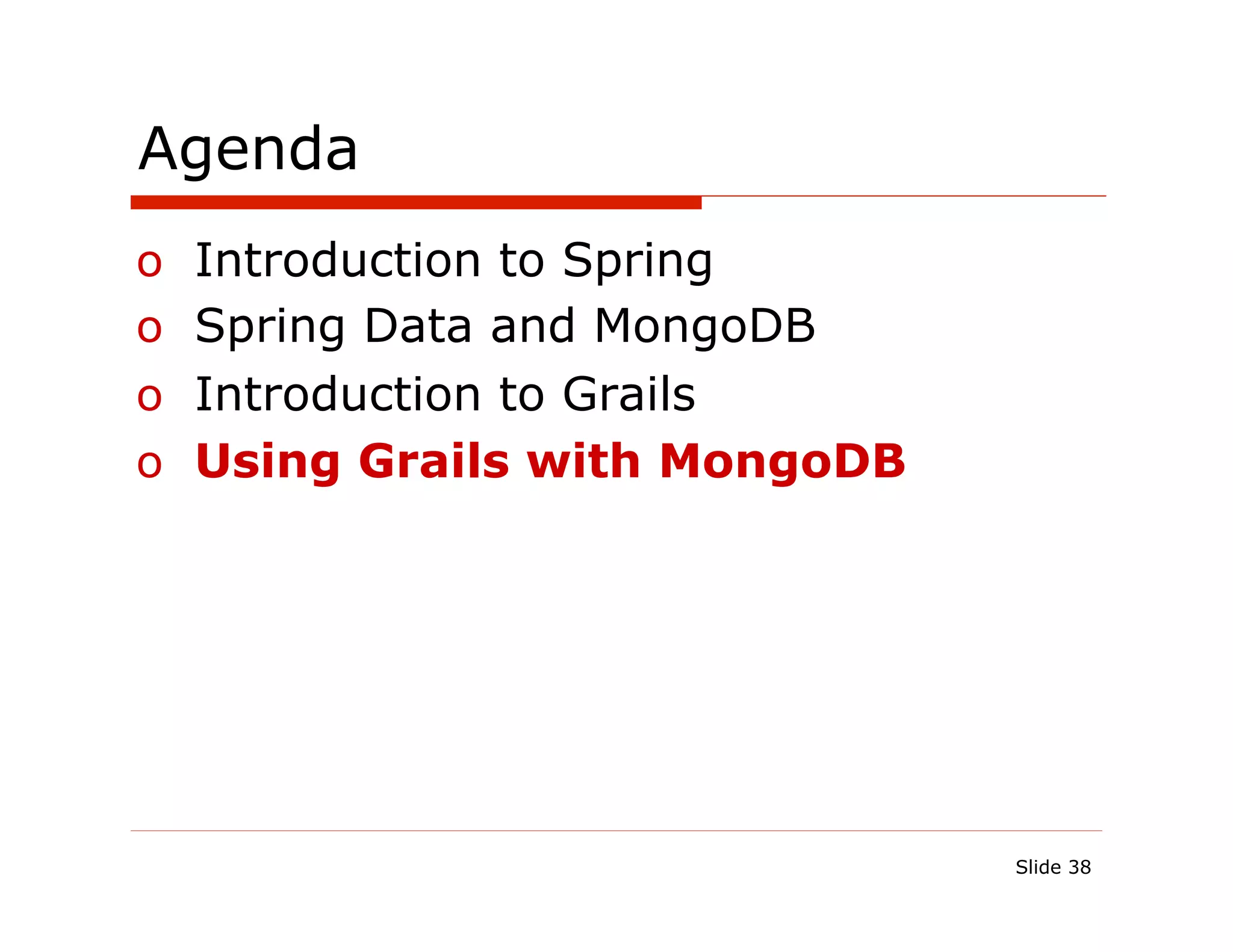
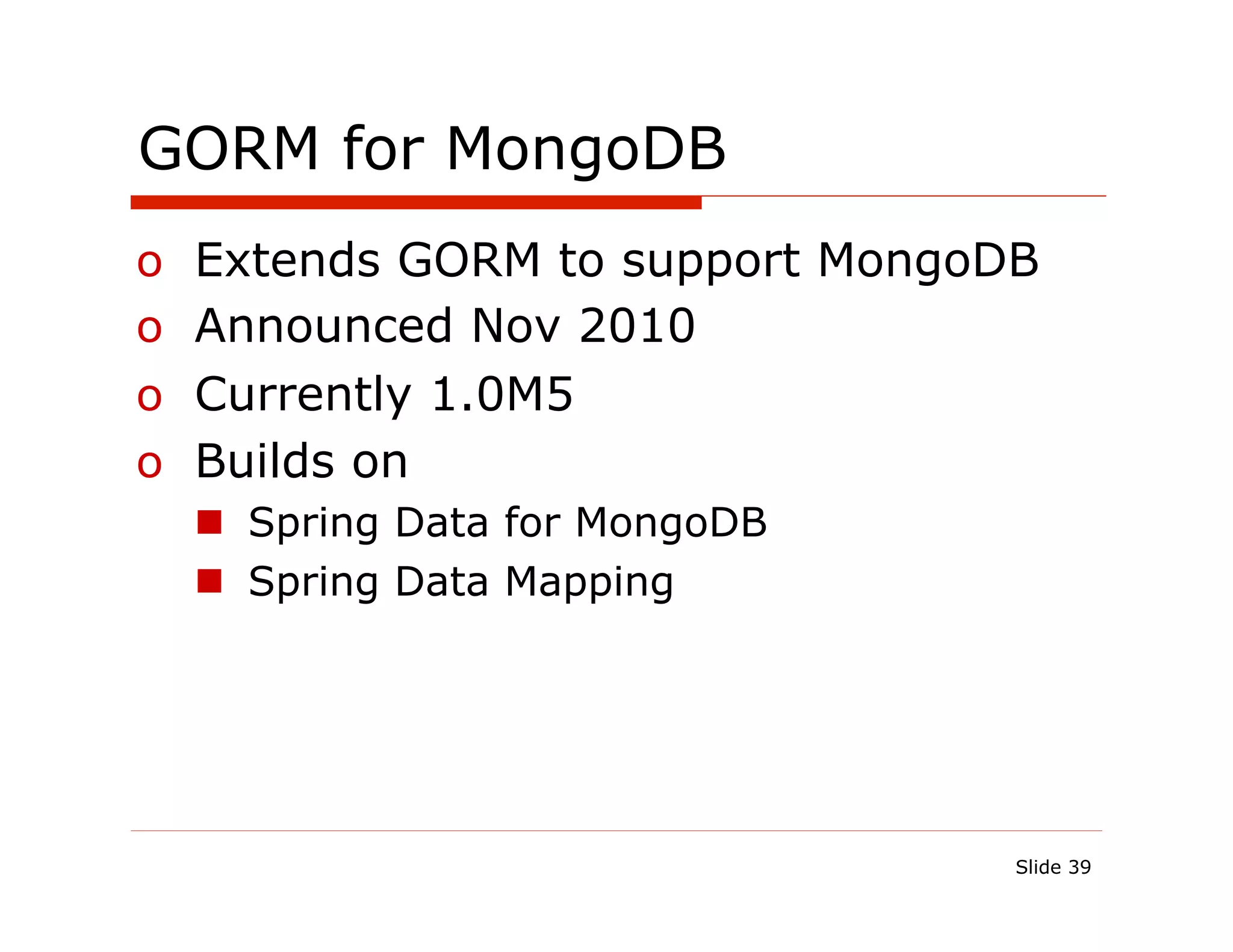
![GORM/MongoDB example grails uninstall-plugin hibernate grails install-plugin mongodb class Customer { String name Unchanged Address address static hasMany = [ accounts : Account] static embedded = ['address'] } class Address { String street class Account { String city static belongsTo = [customer: Customer] String state double balance String zip } } DataSource.groovy mongo { host = "localhost" } Slide 40](https://image.slidesharecdn.com/springandmongophilly2011-110503160556-phpapp02/75/MongoDB-for-Java-Developers-with-Spring-Data-40-2048.jpg)
